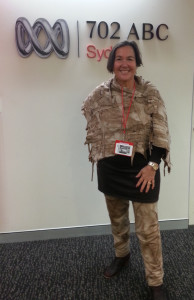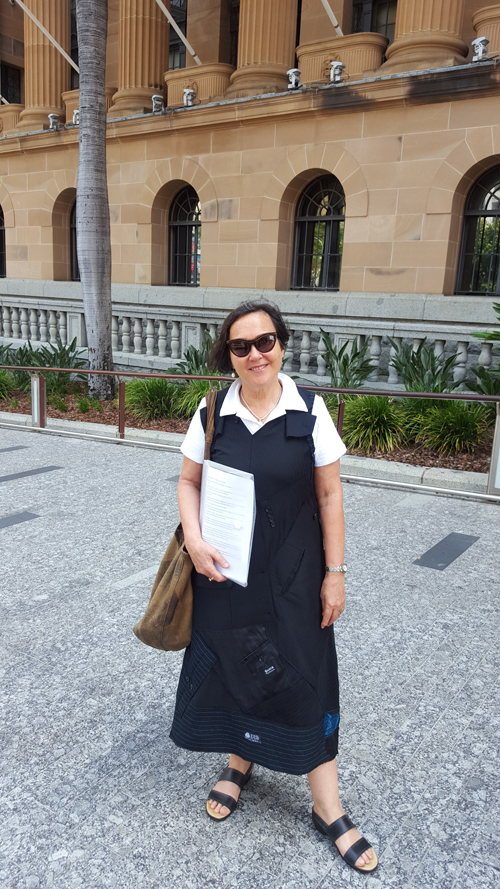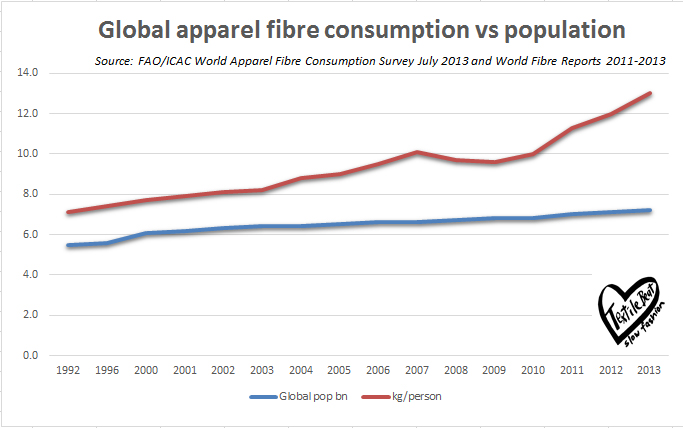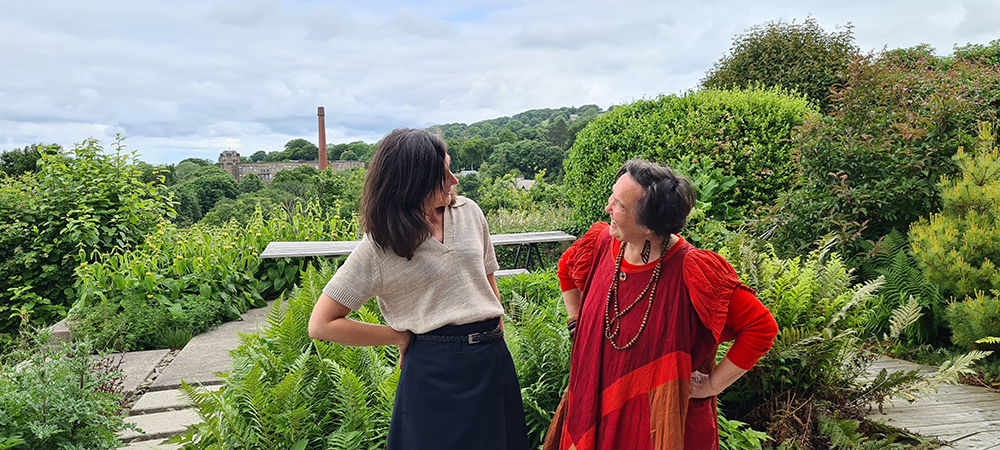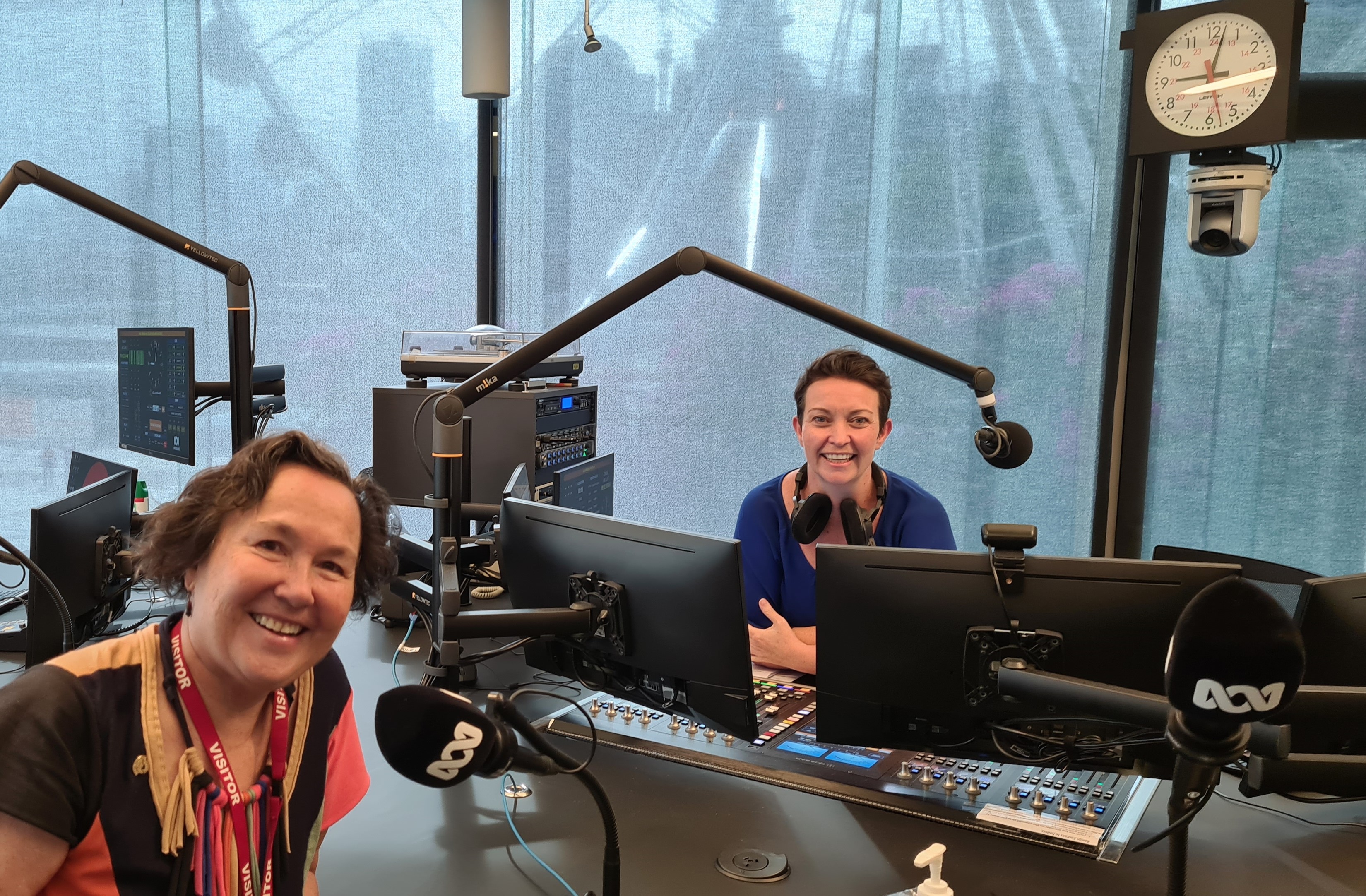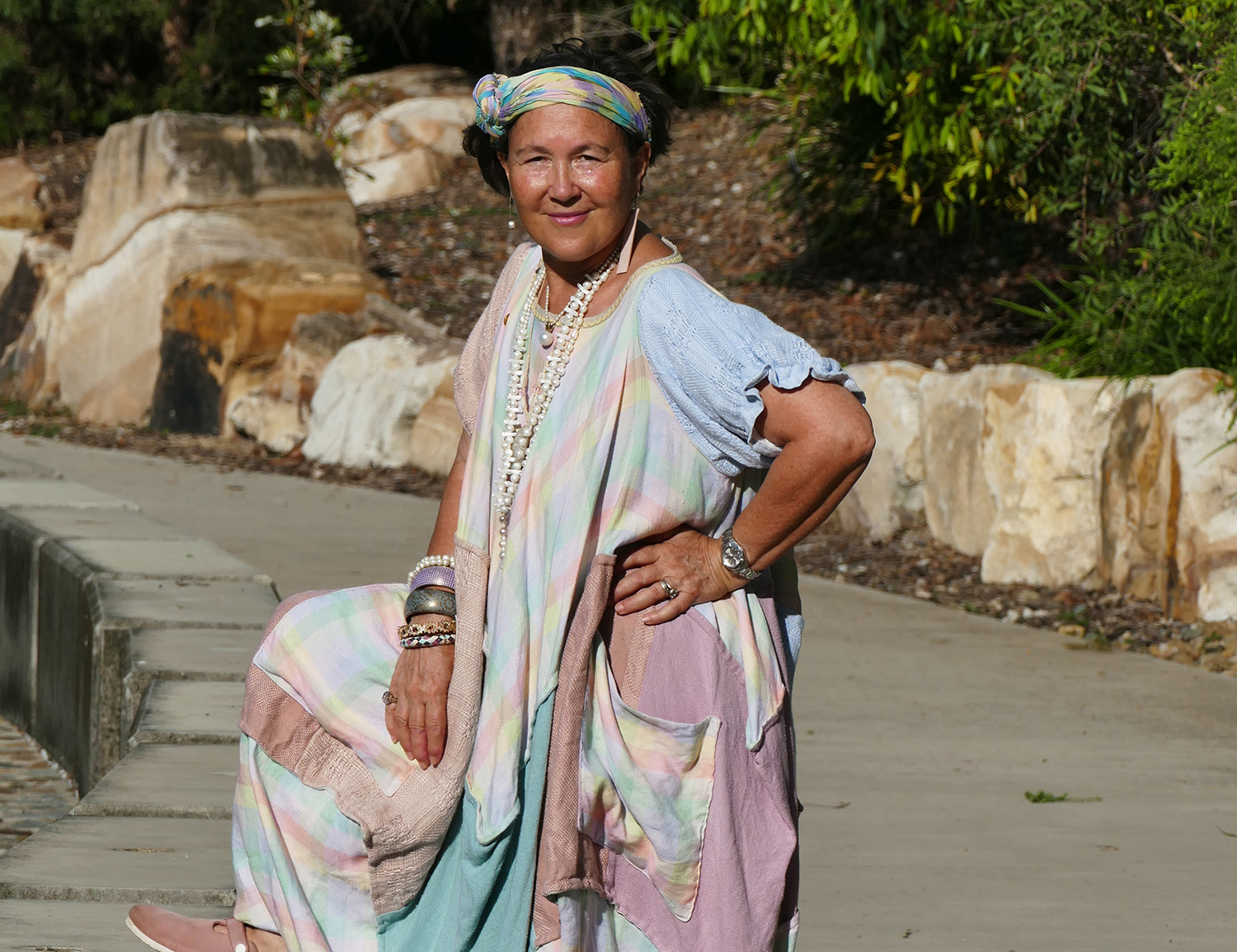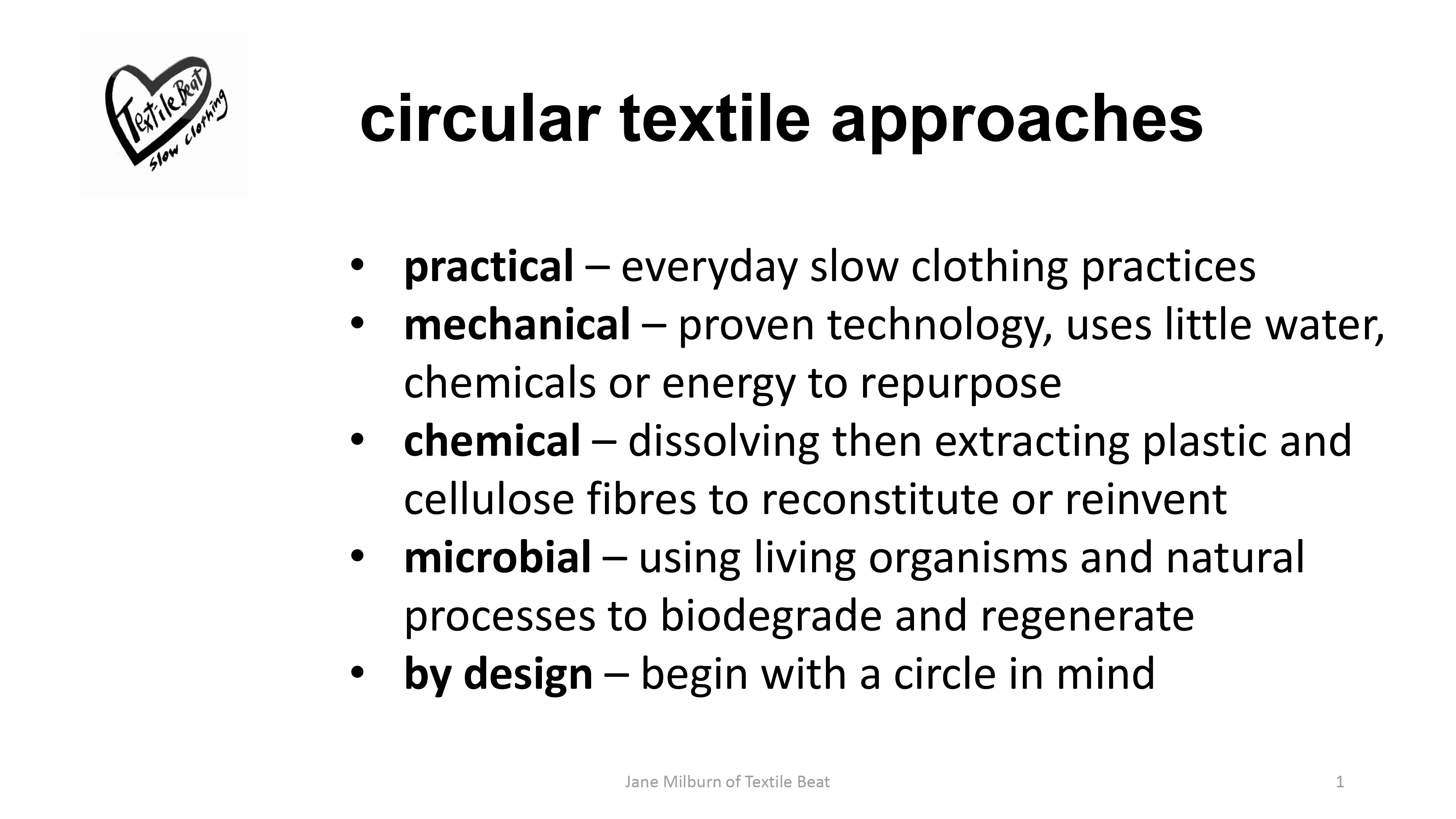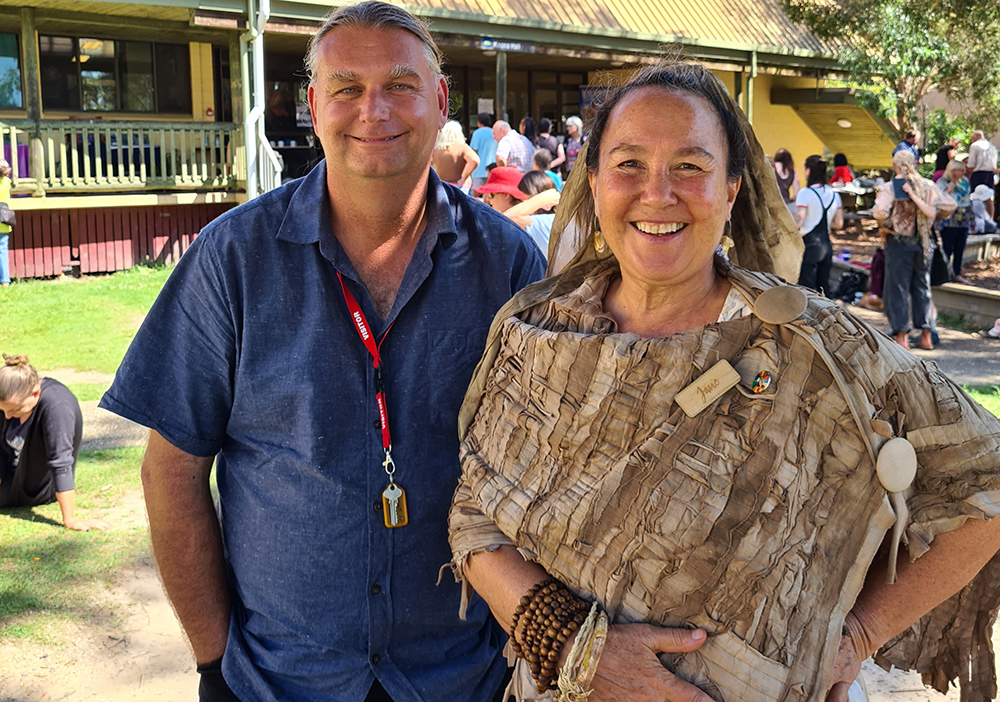Slow Clothing is a philosophy. It is a way of thinking about how we buy, wear and care for clothes so they bring meaning, value and joy to every day. It is based on the premise that clothes do for us on the outside what food does inside. They warm and protect our bodies, and influence the way we feel and present to the world.
Slow Clothing considers what we wear from a health and wellbeing rather than fashion context. The philosophy is encapsulated in a book, Slow Clothing: finding meaning in what we wear, by Jane Milburn and available here. The book presents a compelling case for why we need to change the way we dress, to live lightly on Earth through the everyday practice of how we wear and care for our clothes.
Slow Clothing is the antithesis of fast fashion. It considers the ethics and sustainability of garments, values provenance and artisan skills while focusing on timeless style, comfort and connection. It is about thoughtful, ethical, creative and sustainable ways to enjoy the garments we wear every day while minimising our material footprint on the world. Slow Clothing manifests itself through 10 simple approaches – think, natural, quality, local, care, few, make, revive, adapt and salvage.
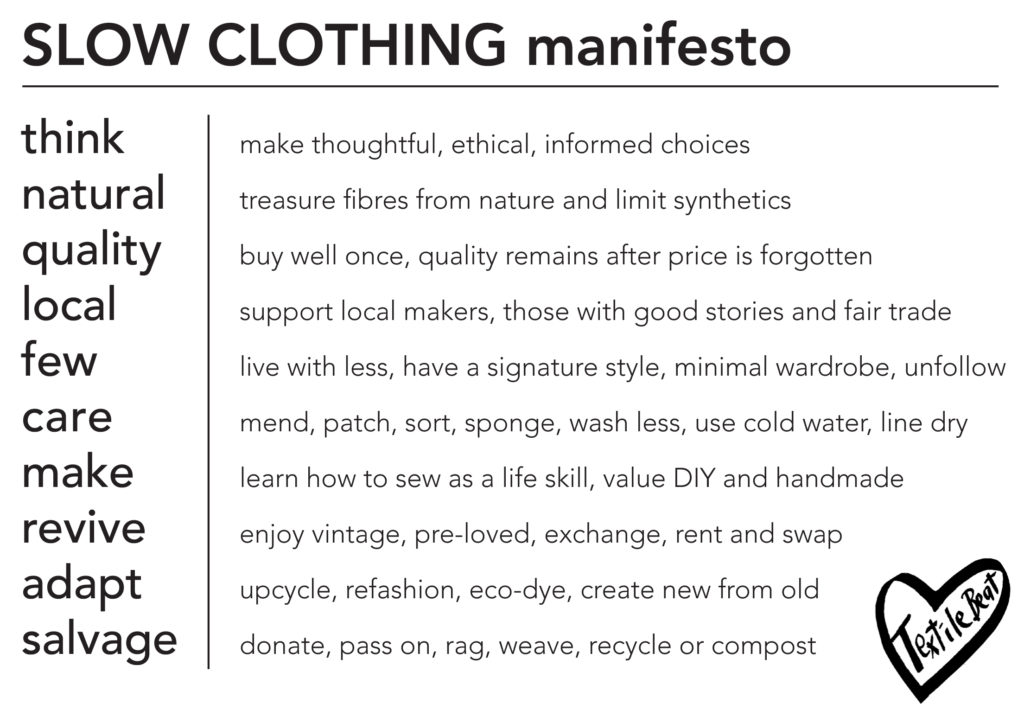
Jane Milburn wrote Slow Clothing: finding meaning in what we wear based on five years’ studying the need to transform the culture of excess in developed nations such as Australia. The book presents a compelling case for wearers to push back on fast-fashion culture that has led to exponential consumption and soaring use of synthetic fibres in the past decade.
Slow Clothing is about we – the wearers – taking action to buy, use and discard clothing in ways that minimise our material footprint. It includes a manifesto of actions and choices: think, natural, quality, local, few, care, make, revive, adapt and salvage.
Jane believes clothes do for us on the outside what food does inside. They protect and warm our bodies, and influence the way we feel and present to the world.
‘We eat and dress every day to survive and thrive, and in the same way we have become conscious of food and its impact on health and wellbeing, we are becoming conscious of the substance and origins of what we wear,’ Jane said.
‘With slow clothing, we reflect our own style and spirit, independent of fashion cycles. We buy carefully, gain skills, and care for what we wear as an embodiment of ourselves. Through this action we, the wearers, become original, authentic and resourceful.
‘Among other things, we are becoming interested in using simple hands-on techniques to make, recreate and repair some of our clothes. Until we make something for ourselves to wear, we cannot appreciate the resources, time and skill that go into the clothes we buy.’
The book includes simple upcycling techniques and ways to repair and mend clothes with diagrams of basic hand-stitching, and how to darn and sew on a button. It includes examples and profiles of slow clothing as lived practice.
‘Hand stitching is a mindful and useful activity. My book demystifies and makes it accessible to everyone – as a way to explore our own creativity and do our bit for planetary health by extending the useful life of existing clothes. When we can mend and make our own mark on things, we are liberated from commodification and an endless search for meaning though buying more stuff.’
Jane’s Slow Clothing philosophy and action is part of our revaluation of material things and the search for meaning beyond consumerism. It is about connection to what we wear, and about caring for planetary health and wellbeing rather than branding and image.
‘In the rush to own things for reasons of status and looks, we lose the opportunity to be mindful and resourceful through the act of making and creating,’ she said.
‘Australians consume double the global average and are the world’s second-largest consumers after north Americans, based on annual apparel fibre estimates. And two-thirds of new clothing is now made from synthetic (ie plastic) fibres, derived from petroleum.
‘Dressing is an agricultural act if we want to wear natural fibres such as wool, which is renewable and biodegradable. The alternative is synthetic fibres like polyester, derived from petroleum and known to shed microplastic particles into the ecosystem with every wash.’
Jane founded Textile Beat in Brisbane in 2013 as a way of exploring creative, sustainable, affordable and ethical ways of dressing that don’t harm people, places or the planet. She has presented and gathering information from hundreds of workshops and talks with various groups, teachers, students and local councils.
Rethinking clothing culture is essential to turning the tide on the exploitation of garment workers caught within global supply-chain empires that foster fast and wasteful consumption.
Slow Clothing: finding meaning in what we wear is a 192-page paperback with 250 illustrations, available in Australia via textilebeat.com for $28 plus postage and internationally via Book Depository and Amazon.
…………..
In an era dominated by passive consumption of cheap and synthetic fashion, Jane Milburn arrived at the Slow Clothing philosophy by refashioning garments in her wardrobe to provide meaning and story.
It was also informed by The Slow Clothing Project, Textile Beat’s 2016 campaign to spark conversation about clothing use and reuse by creating a collection of garments handmade by individuals across Australia. The focus was on making your own garments, using natural fibres and textile reuse where possible. The 40 maker stories which are linked below. For more details about the project, scroll to the bottom.
Dr Nicola Smith – DIY enables direct engagement with physical world, for comfort and creativity.
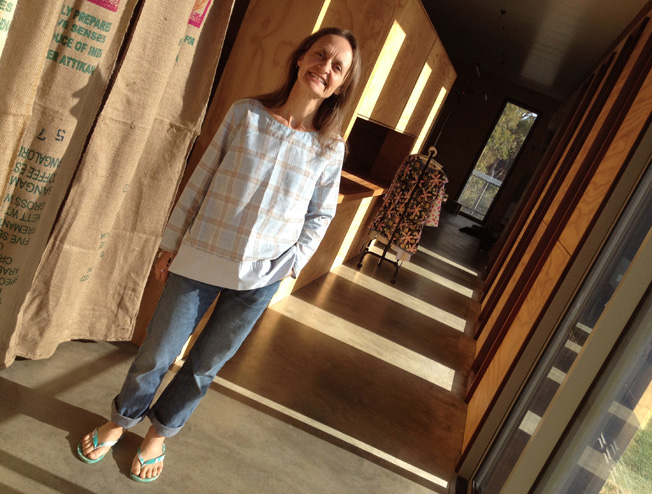
Dr Nicola Smith wears her comforable and buttonless top made in her style for The Slow Clothing Project.
Jennifer Bain – Meaningful making that reconsiders the wearability of items others discard.
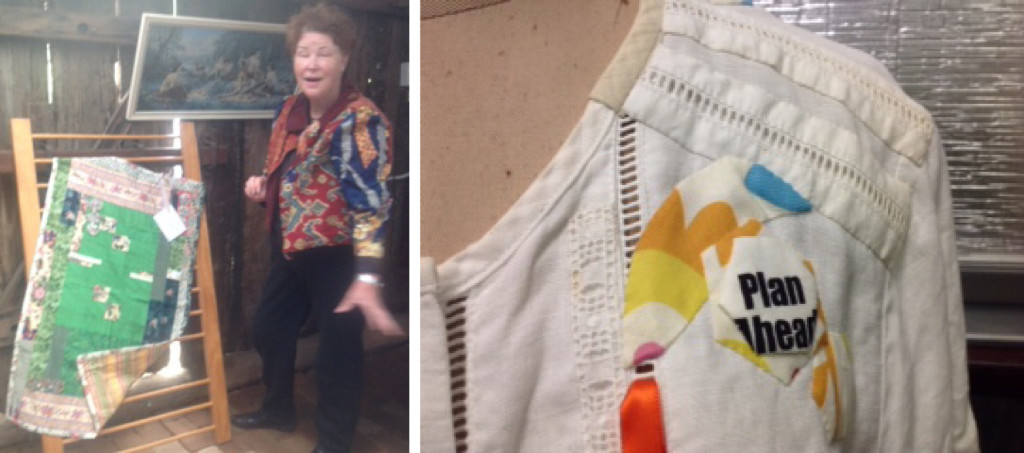
Jennifer Bain shows how she brings meaning to quilts and clothing
Michelle and Grace McRae – skills valued for many reasons, including self-worth and resilience
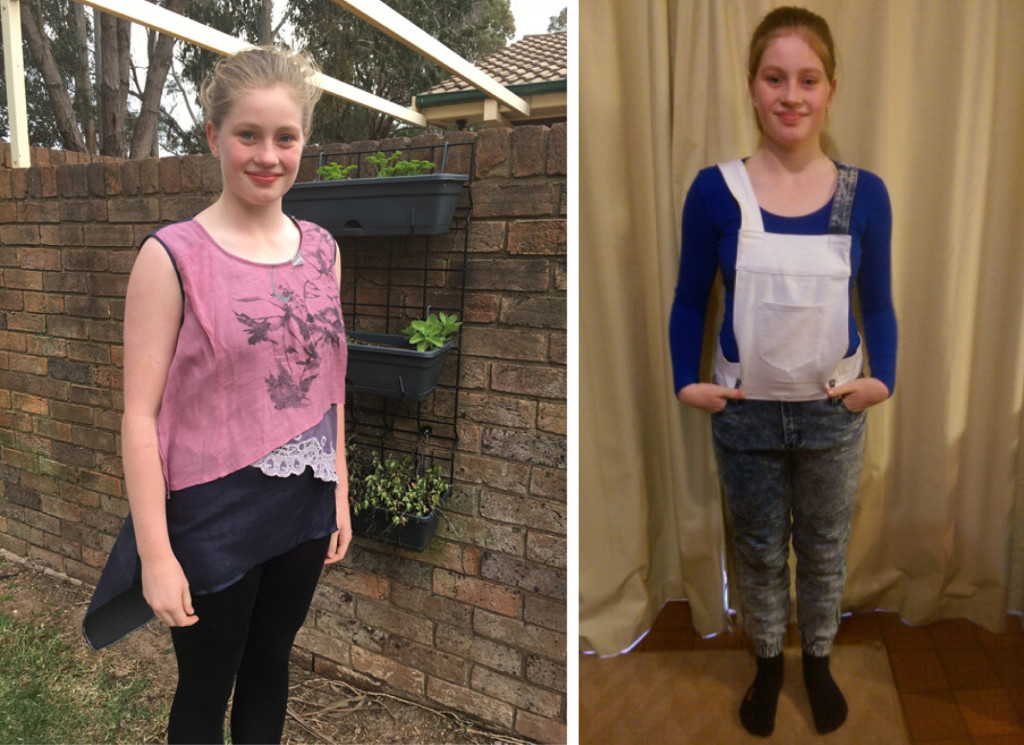
Grace wears garments upcycled by herself and Mum Michelle for The Slow Clothing Project
Vivienne Poon – values the story and creativity that goes into making a garment of your own
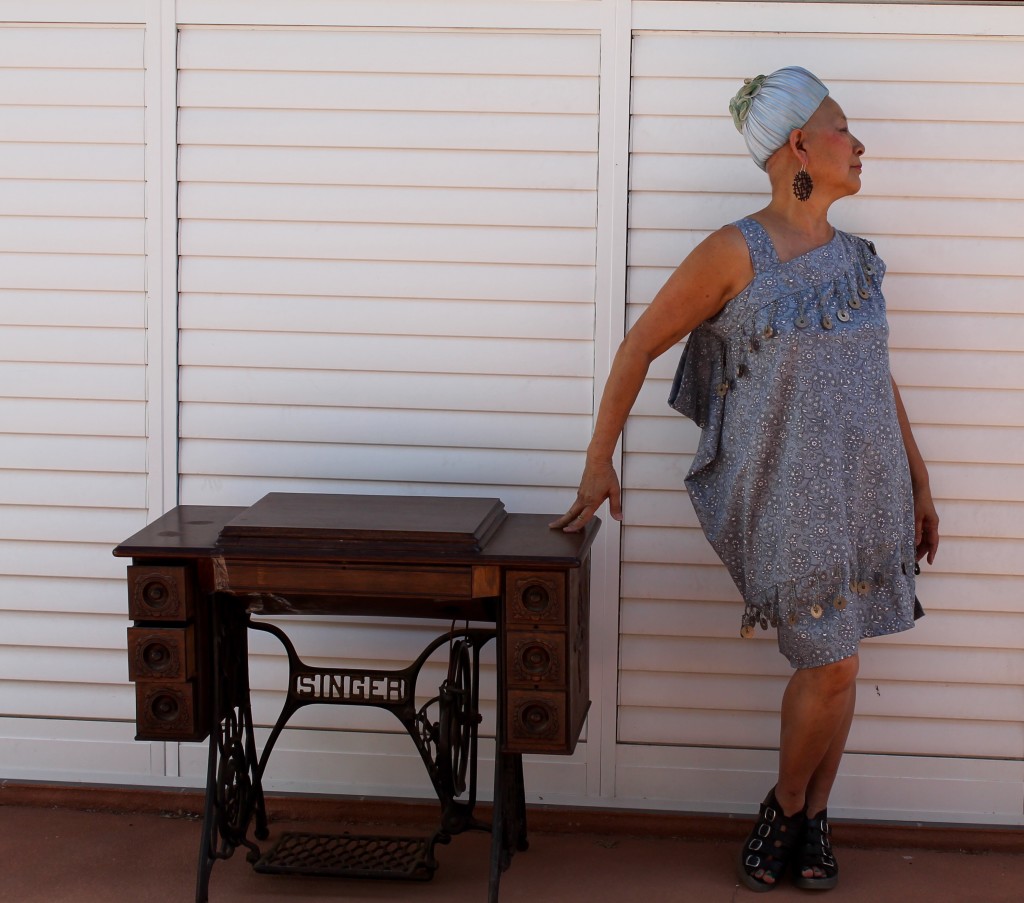
Vivienne Poon wears the garment she created for The Slow Clothing Project.
Jenny Jackett – ‘through the hand-making process we learn the values of time, effort and quality”
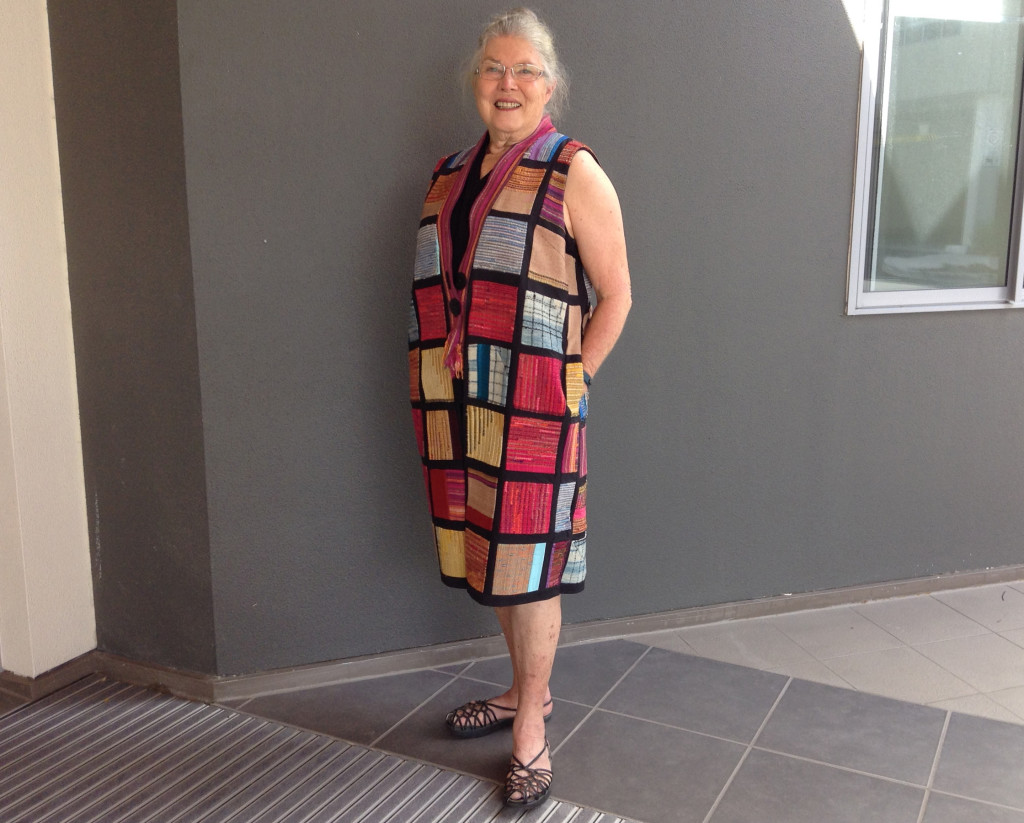
Jenny Jacket wears her coat of many colours handmade for The Slow Clothing Project.
Jemma Edwards – Rejects fast fashion in favour of unique, handmade garments
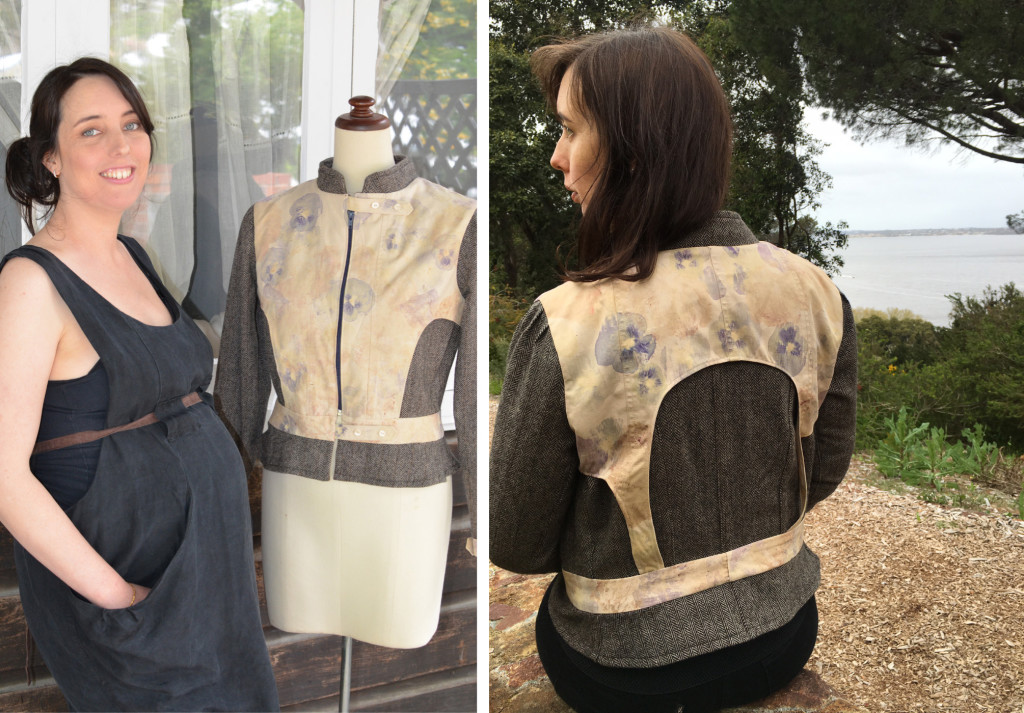
Jemma Edwards created a jacket embellished with bespoke floral prints for The Slow Clothing Project.
Deborah Palmer – Upcycling captures memories and extends the life of retired garments
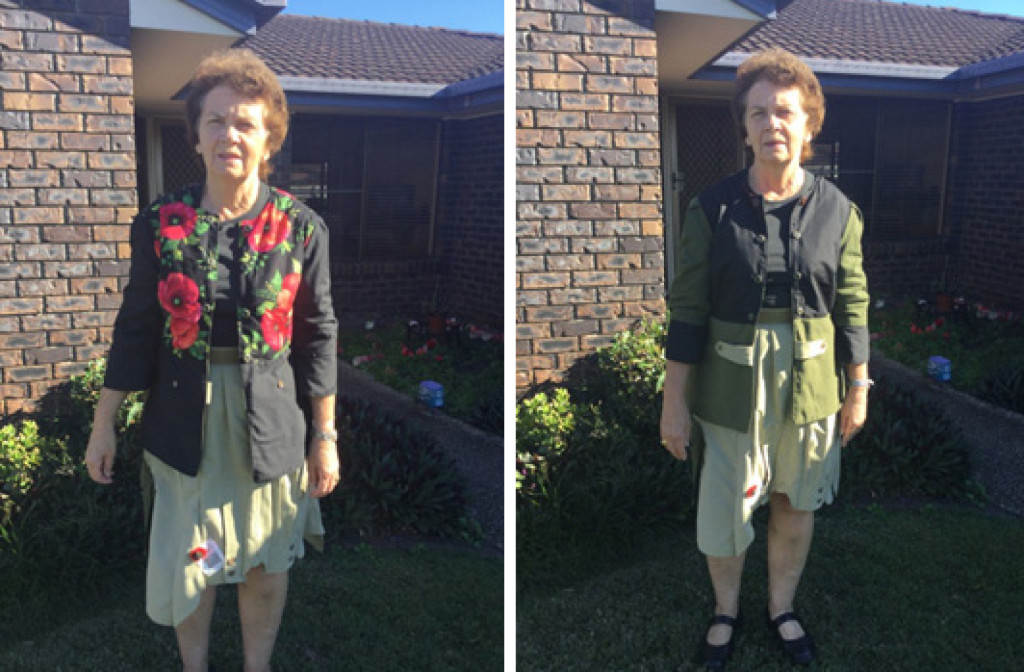
Helen Gainer wears meaningful garments upcycled by her daughter Deborah Palmer
Julie Livingstone – it is good for our mental wellbeing to be able to create something.
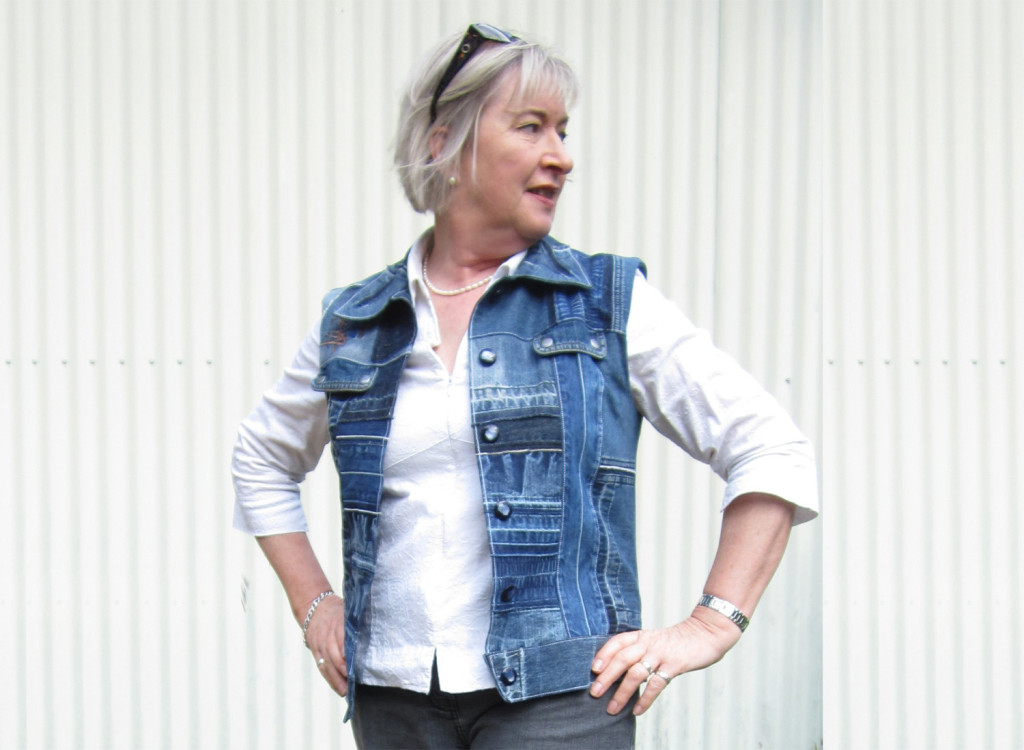
Julie Livingstone wears a vest she recreated from op-shop-found denim for The Slow Clothing Project.
Bron Berkin – Observing something transform from a square of material is so satisfying
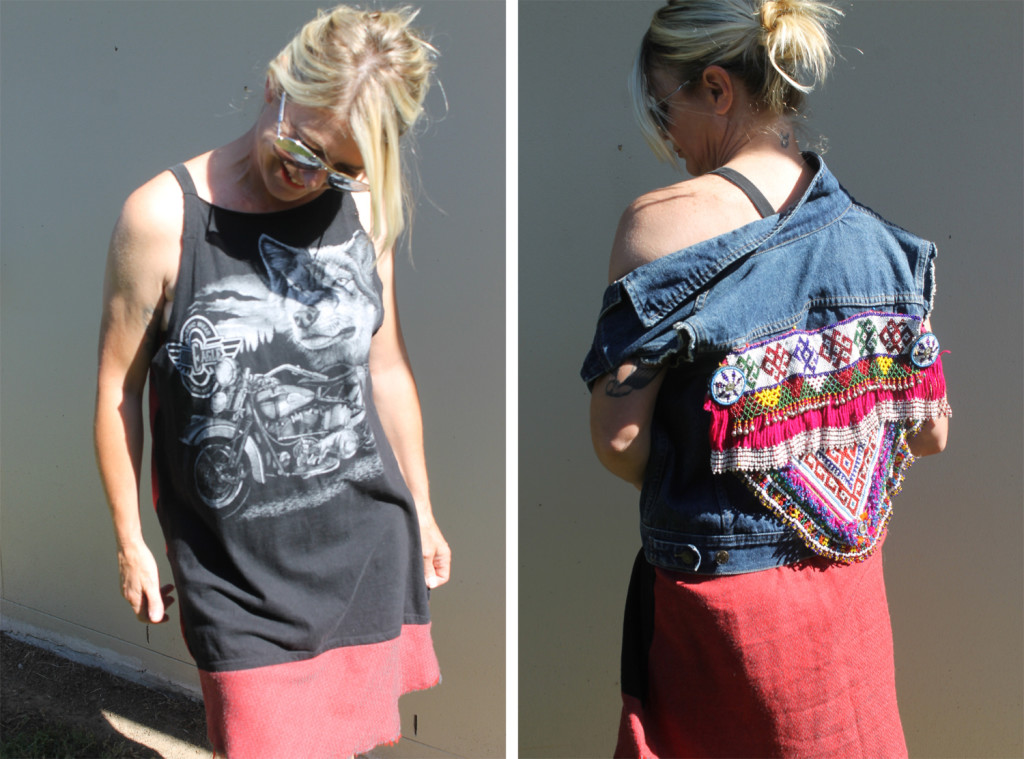
Bron Berkin wears her upcycled Wolf Tee Dress for The Slow Clothing Project
Eliza Kelly – Eliza believes there is huge value in using your hands to create
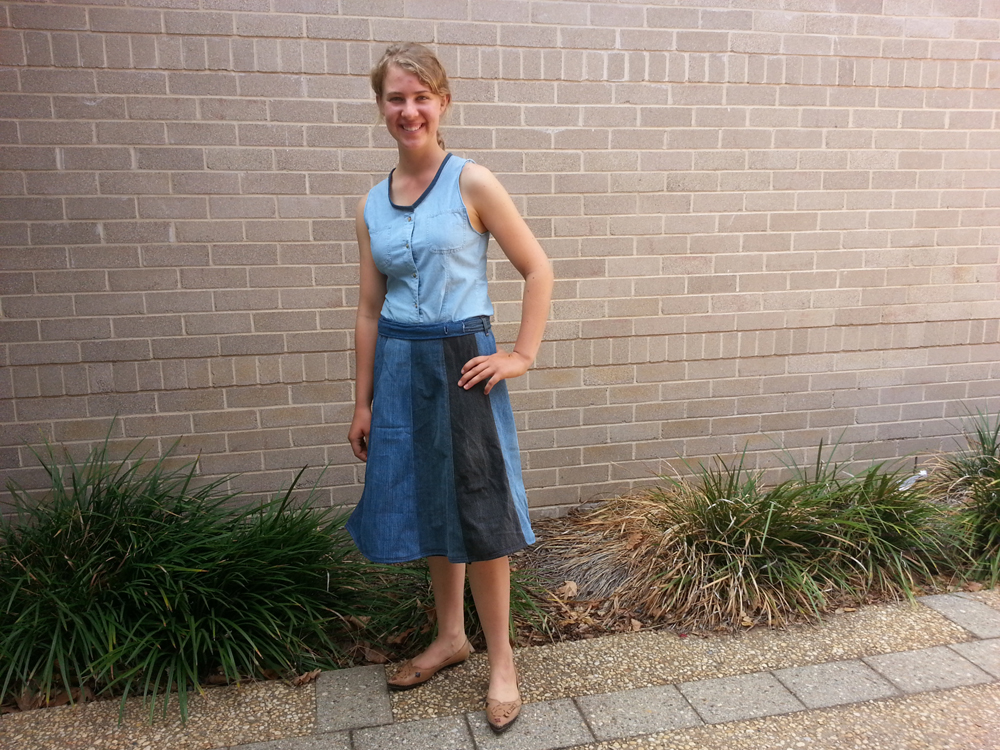
Eliza Kelly from Parkes NSW wears her upcycled denim skirt for The Slow Clothing Project
Wendi Trulson – The whole world needs a lesson, in repurpose, refashion, mend and fix
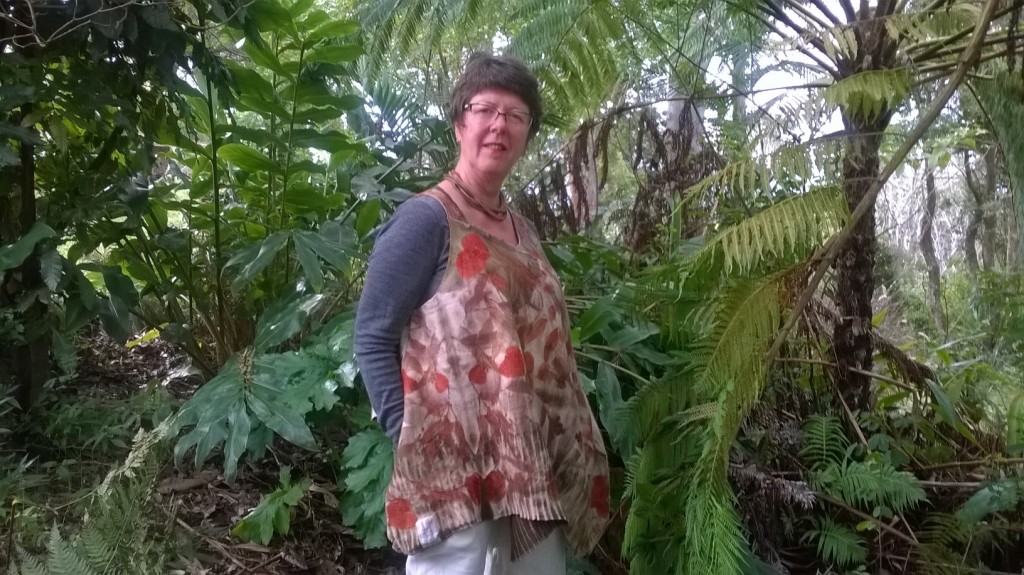
Wendi Trulson wears her eco-dye upcycled wool and cashmere swing top for The Slow Clothing Project
Sarah Lundgren – believes creativity is important for wellbeing and good health
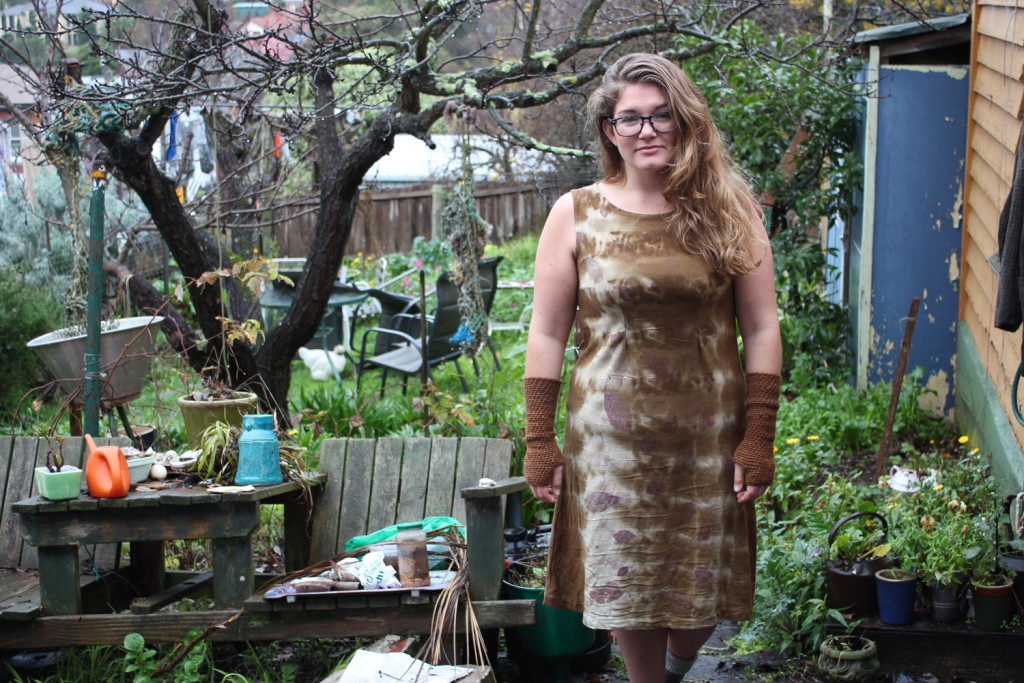
Sarah-Lundgren-wears-her-eco-creation-for-The-Slow-Clothing-Project
Kate Fletcher – Kate’s favourite clothes are created with a conglomeration of different makers
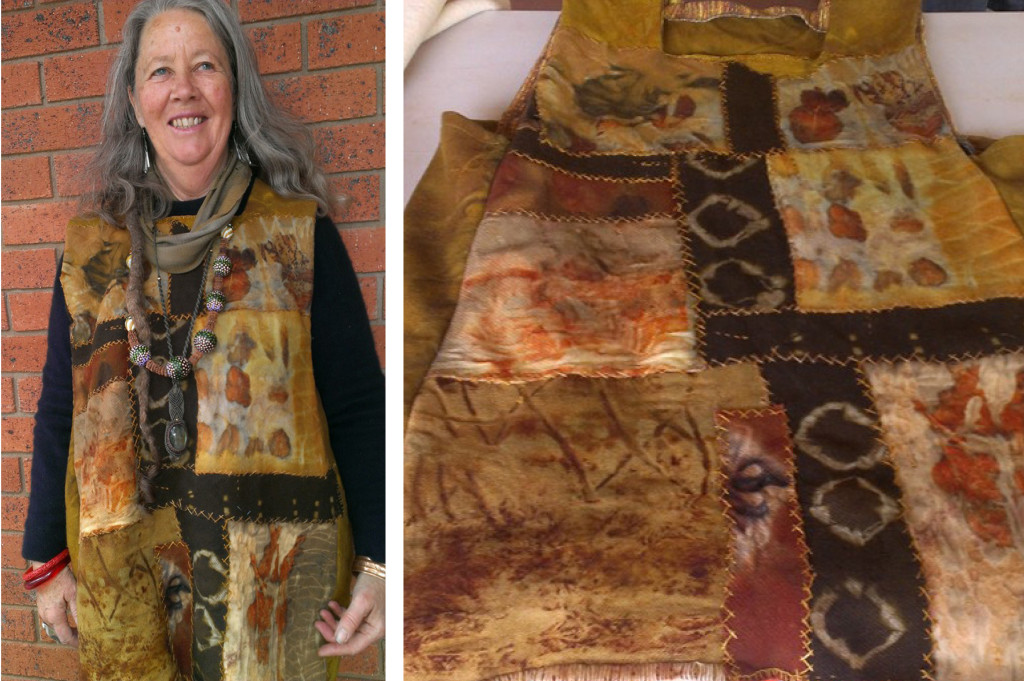
Tasmania’s Kate Fletcher wears her story-filled garment hand-stitched for The Slow Clothing Project
Cathy Stuart – believes the act of making something can create a deep sense of satisfaction.
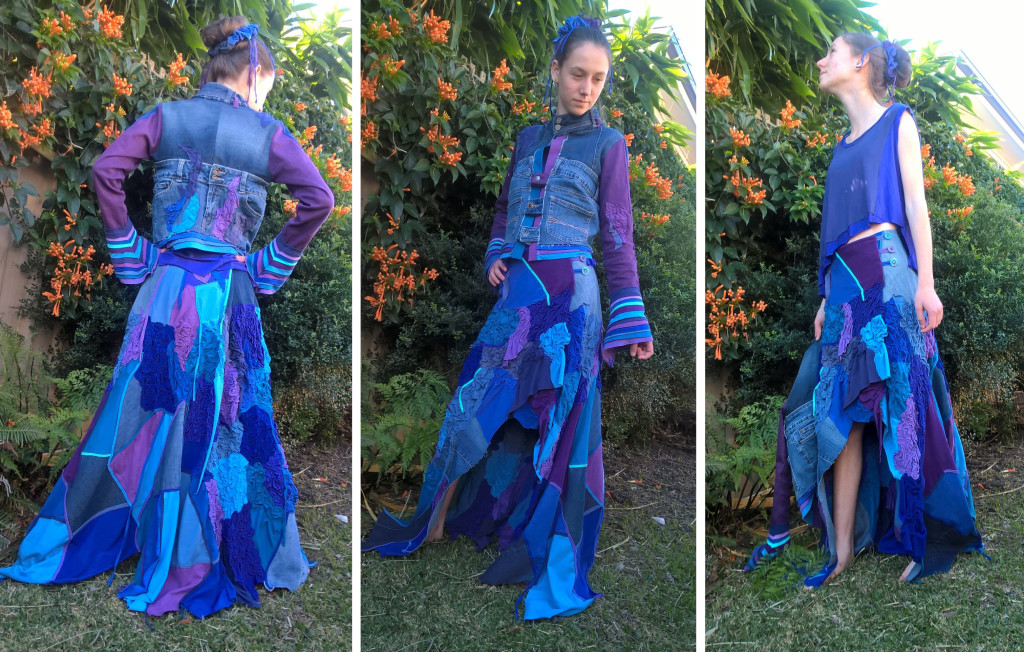
Jasmine wears an upcycled couture creation made by her mother Cathy Stuart for The Slow Clothing Project
Denise Traynor – reusing items helps to counteract the wasteful, mass consumption model.
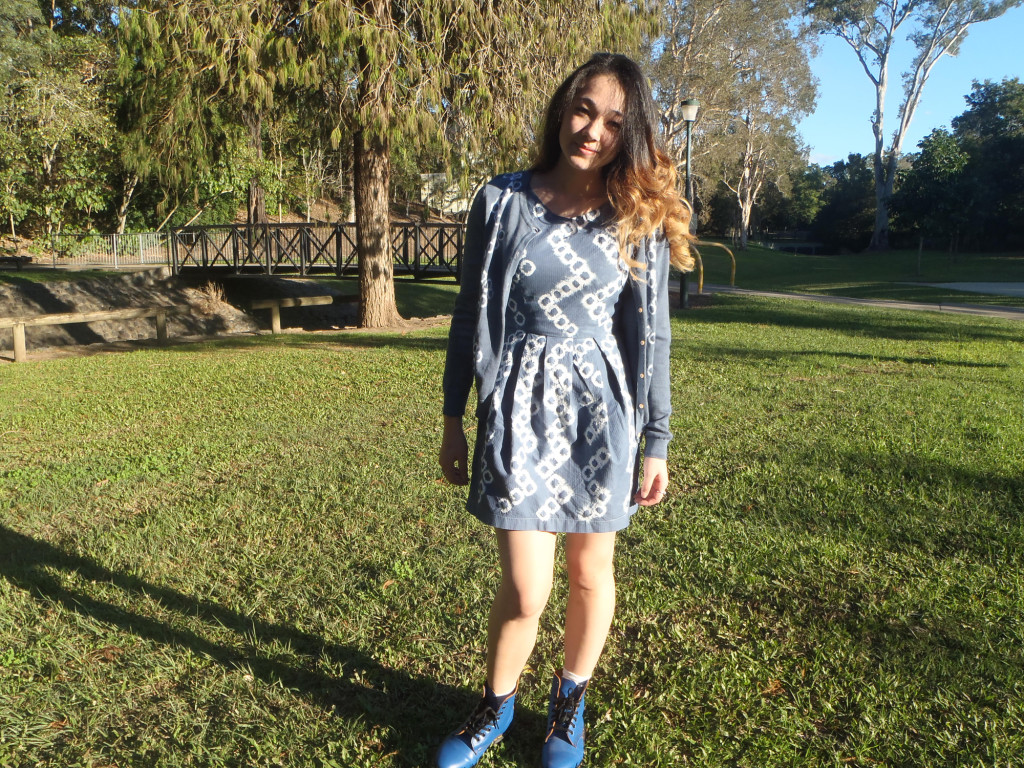
Mei models the dress and cardigan Denise Traynor shibori-dyed as a matched outfit for The Slow Clothing Project
Mariana Kirova – professional upcycler, an eco-fashion educator and an agent for change.

Mariana Kirova creates an eco-fashion statement ensemble for The Slow Clothing Project.
Nina van Hartskamp – true empowerment comes when you create the life you want
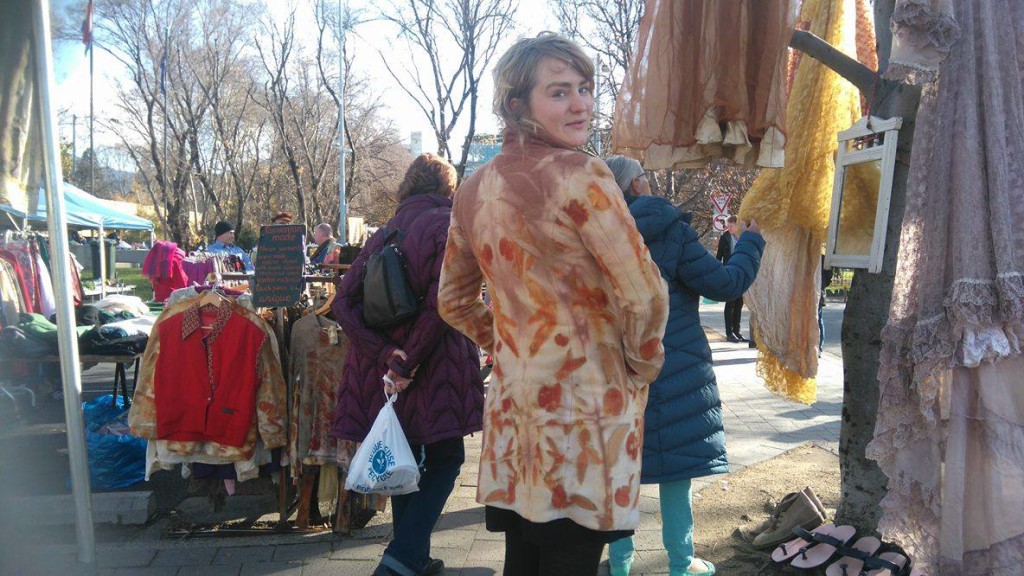
Nina van Hartskamp wears an eco-print wool jacket she transformed for The Slow Clothing Project
Rozalie Sherwood – loves educating people about the potential of making one special jacket
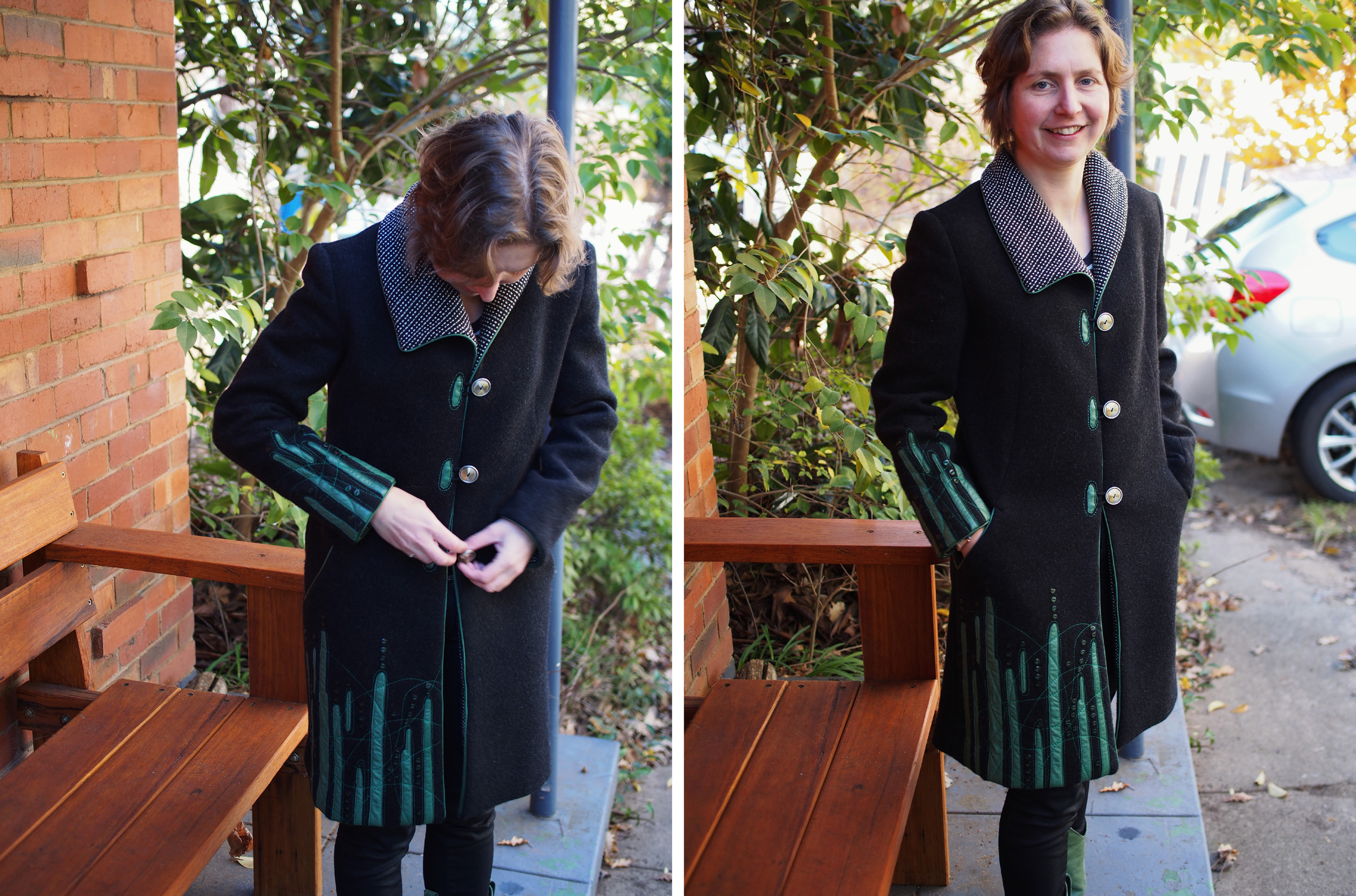
Olivia wears the jacket made for her by mum Rozalie Sherwood as part of The Slow Clothing Project
Saadia Thomson – making for sustainability, creativity, self-expression, uniqueness, enjoyment

Erin Thomson wears an apron made by her mum Saadia from a rescued business shirt for The Slow Clothing Project
Sally Harris – ‘When you make something yourself, you have a greater sense of wellbeing’
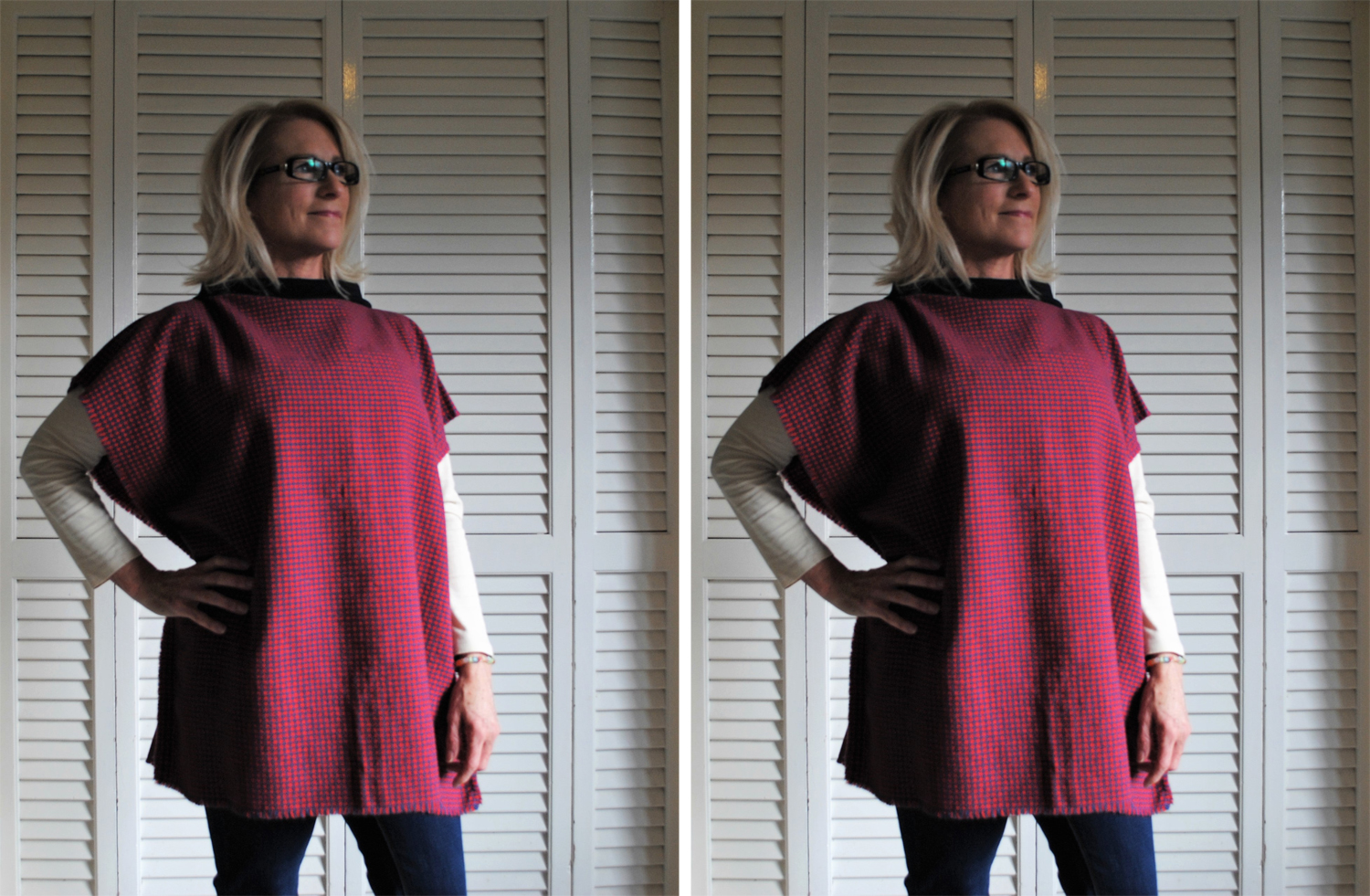
Sally Harris wears a wool poncho she made from a knee rug for The Slow Clothing Project.
Xin Wang – cherishes garments more since she knows the effort and time taken to make
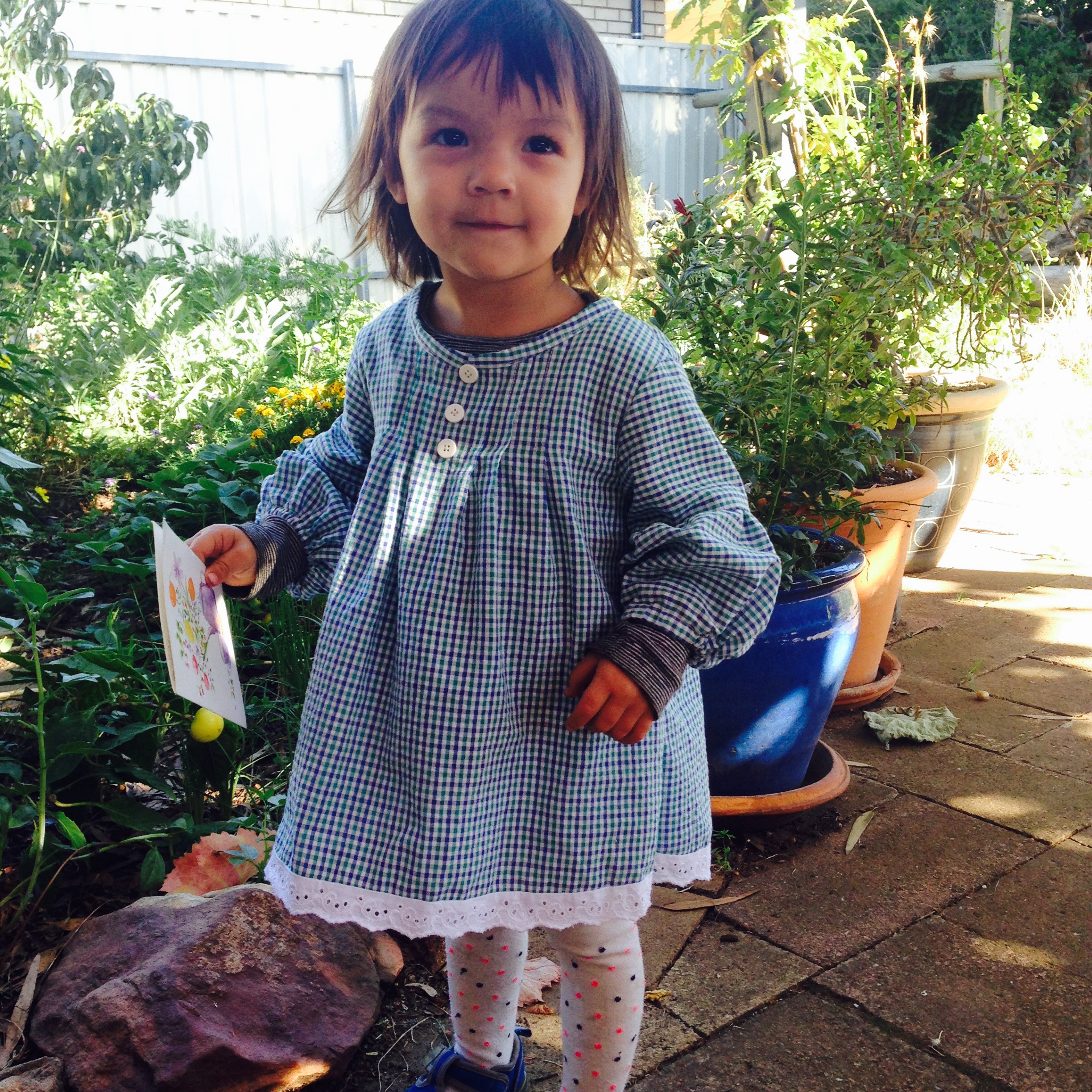
Gorgeous Flora Hanisch wears a dress handmade by her mum Xin
Barbara Sherlock – “I adapt the clothing to fit my figure, my lifestyle and my age group”

Barbara Sherlock upcycled a wool skirt into a sleeveless vest for The Slow Clothing Project.
Cath Jarvis – she learned to sew after realising these skills are useful for sustainable living
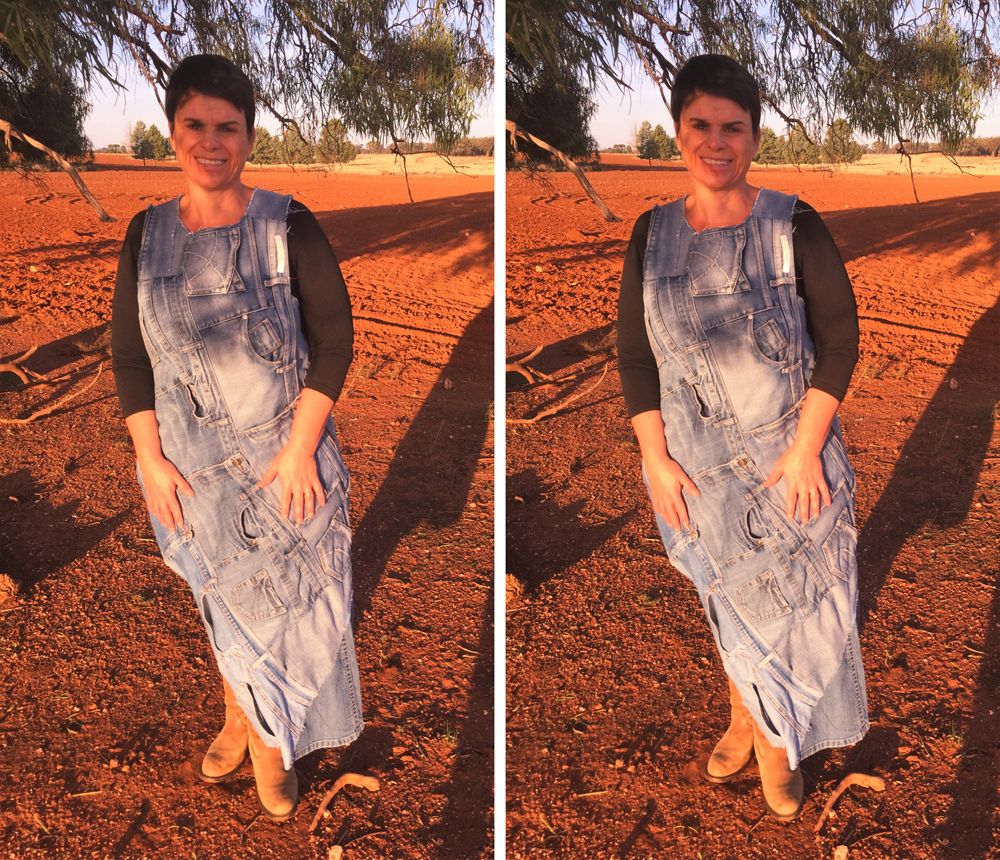
Cath Jarvis wears the pinny she created for The Slow Clothing Project from discarded jeans and work shorts
Genevieve Manhal – learning problem-solving and critical thinking through the design process

Genevieve Manhal from south Gippsland made this versatile pinafore/skirt for The Slow Clothing Project.
Frances Leske – making her own clothing brings joy and self-confidence
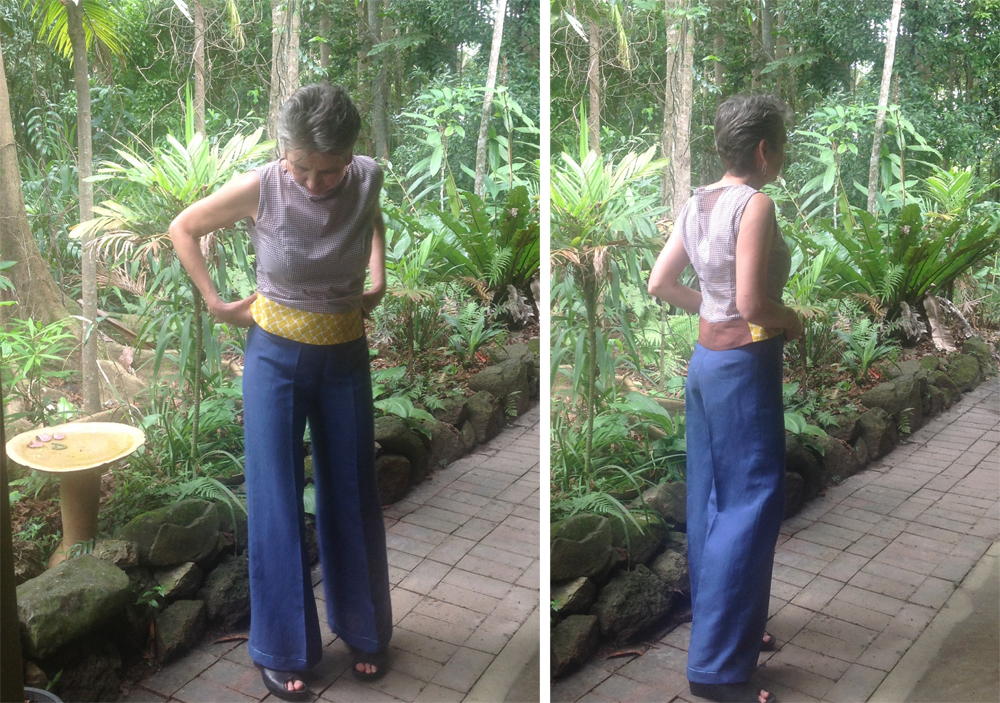
Frances Leske used fabric gifted from her mother to create wide-leg pants and a top for The Slow Clothing Project.
Tamara Russell – believes the slow, meditative process of stitching is great for body and soul.
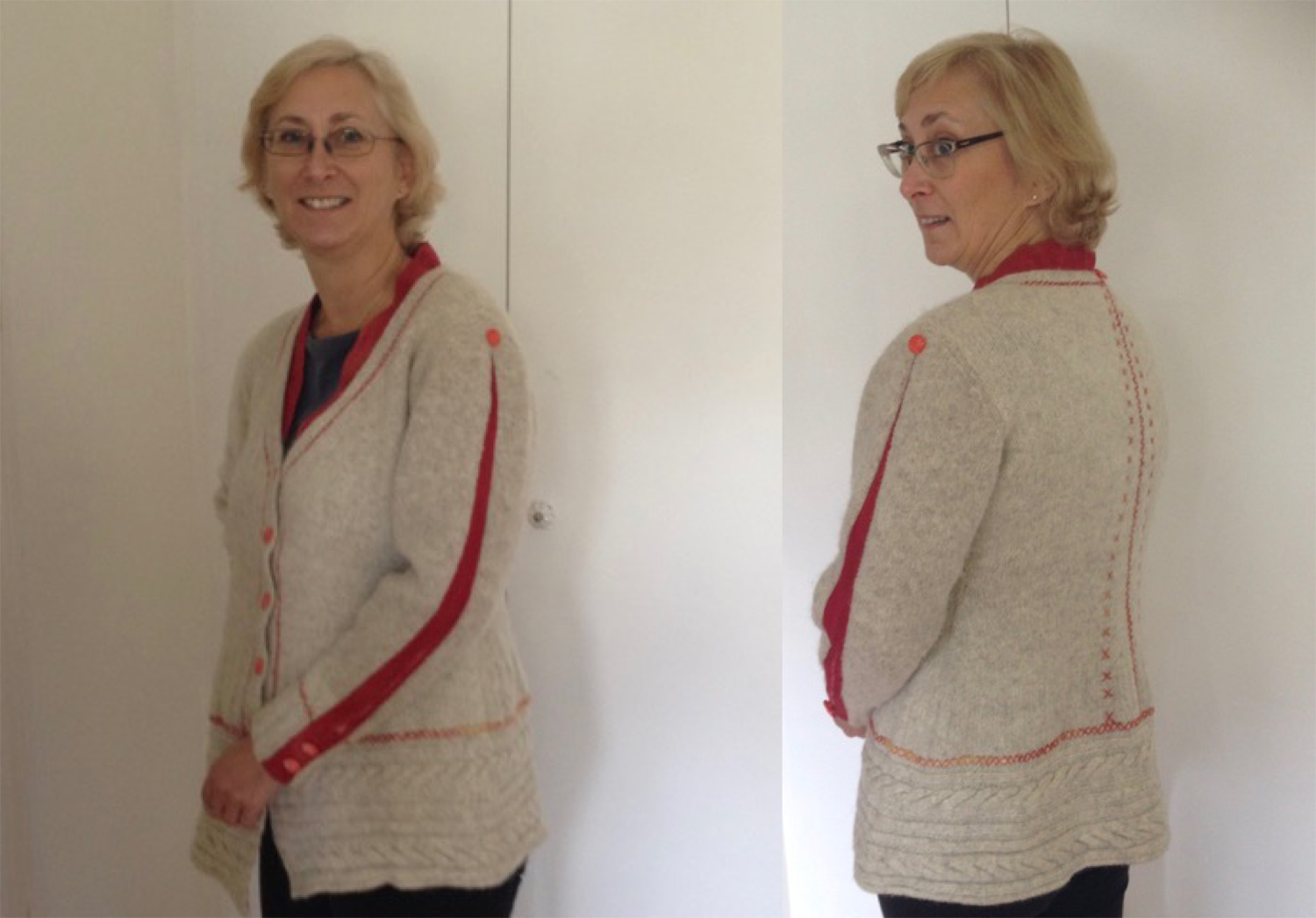
Tamara Russell made a signature wool cardigan for The Slow Clothing Project.
Dr Jenny Ostini – ‘sewing gives me the chance to slow down and create’
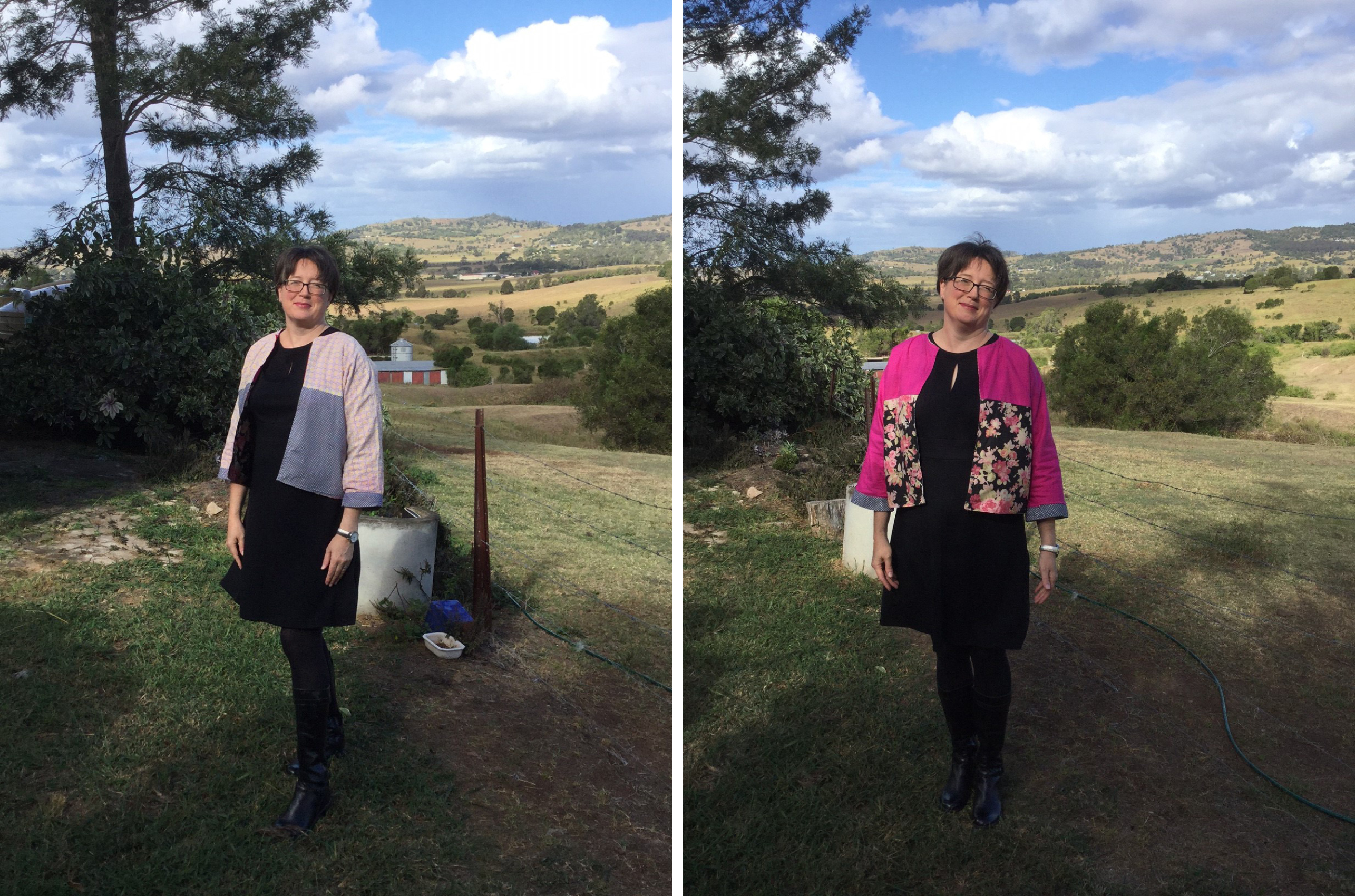
Jenny Ostini wears handmade jackets created for The Slow Clothing Project, worn with op shop-found black dress
Leeyong Soo – loves the palpable satisfaction of making and remaking her own clothes
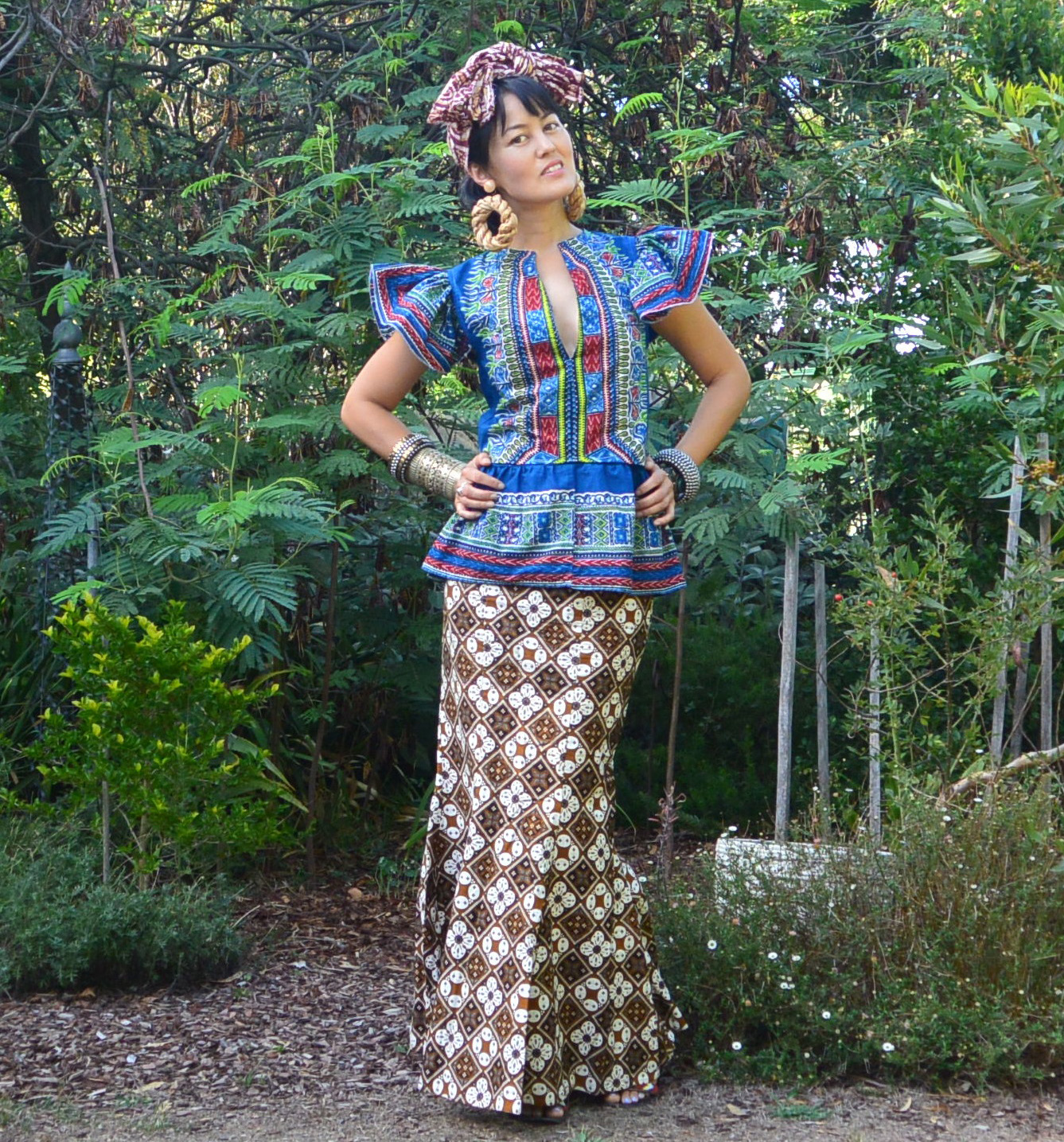
Leeyong Soo wears one of the five garments she created from one caftan for The Slow Clothing Project.
Emma Williamson – ‘supporting handmade, ethically produced items has many benefits’
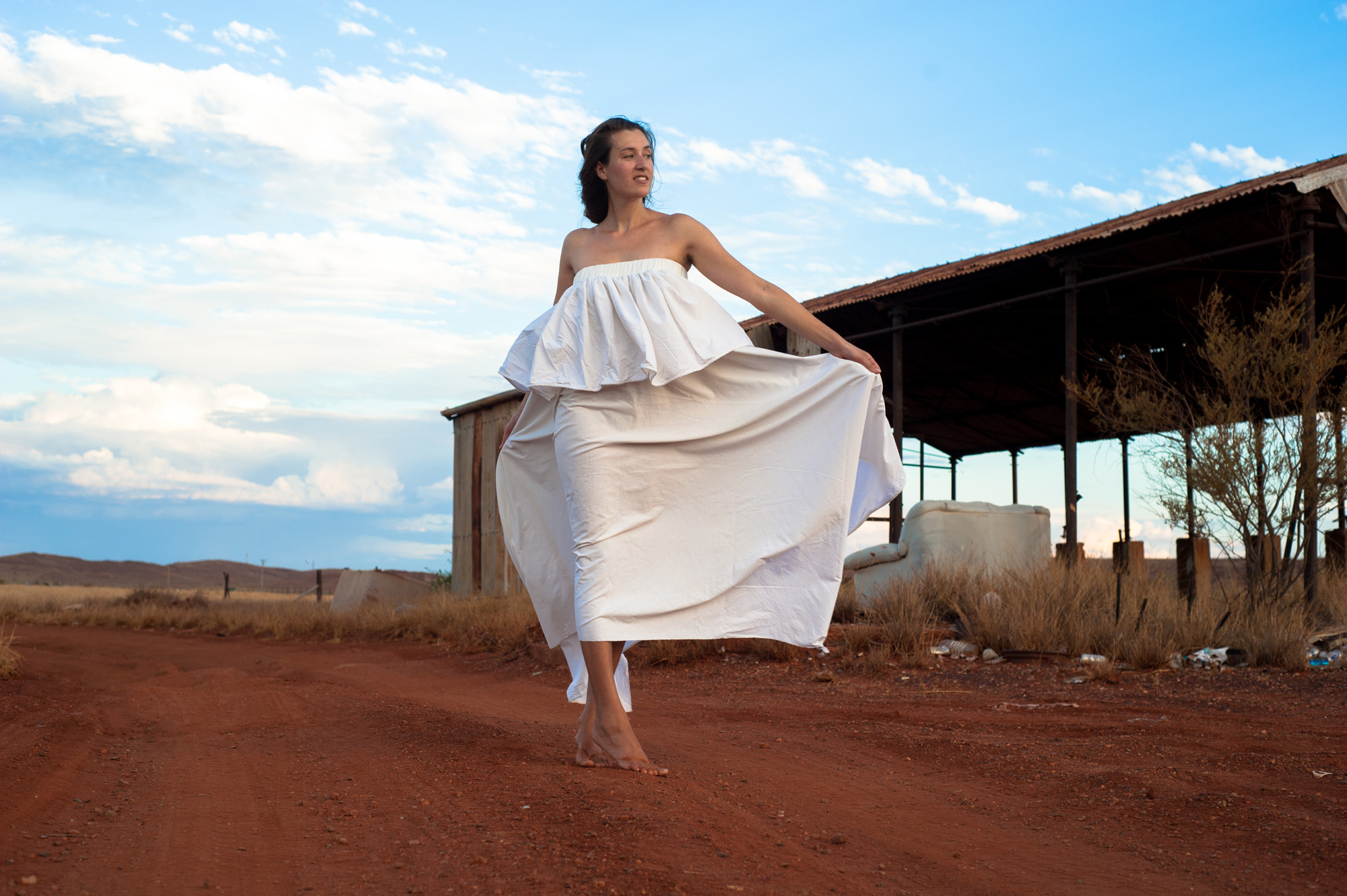
Emma Williamson wears the dress she made from a sheet for The Slow Clothing Project. Photo by Helen Osler
Kerri Harris – “it’s such a shame to lose sewing skills when they’re relatively easy to master”
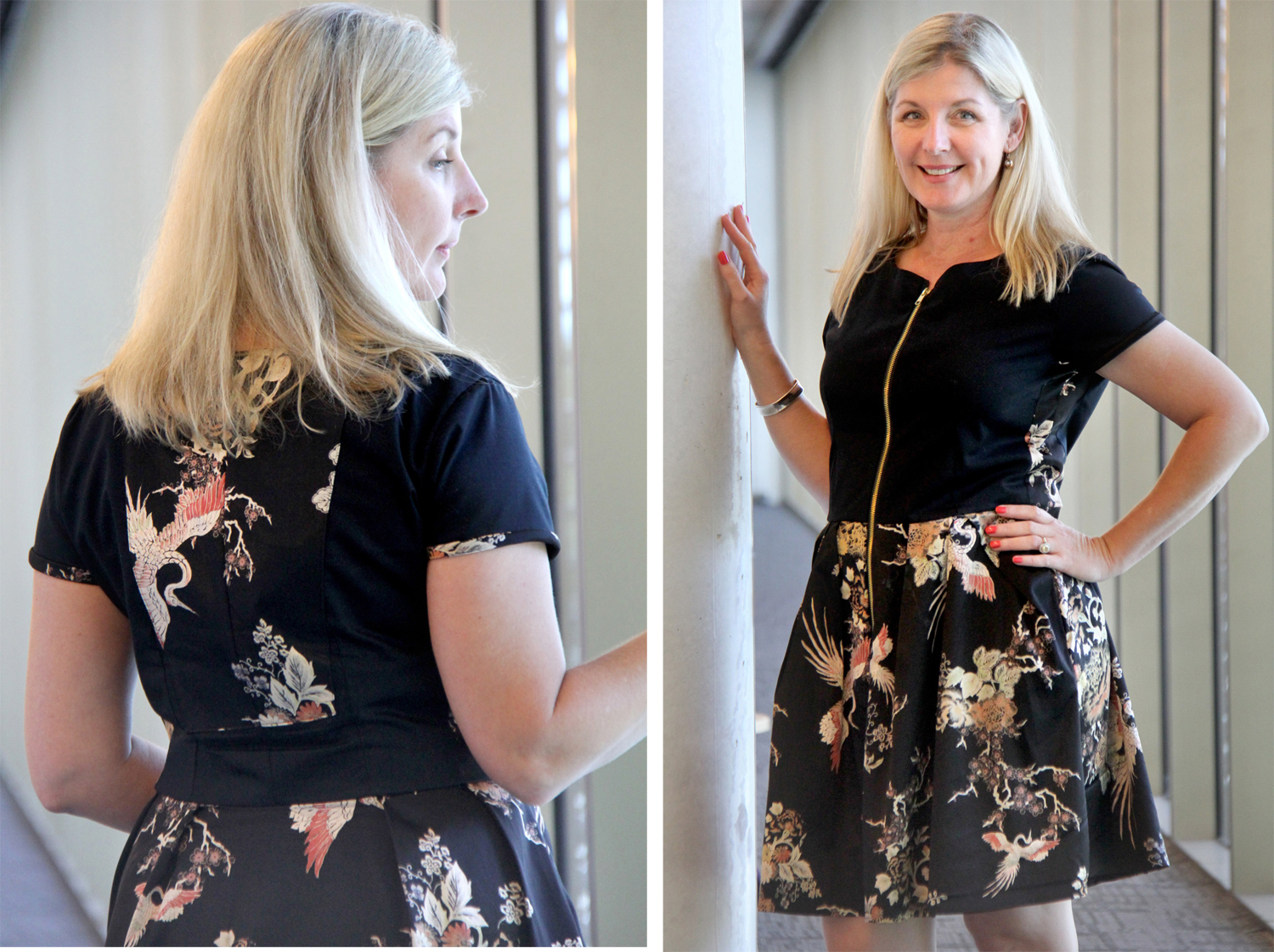
Kerri Harris wears the garment she recreated for The Slow Clothing Project. Photos by Giulio Saggin
Elizabeth Kingston – believes in shifting thinking from being ‘in fashion’ to being ‘in style’
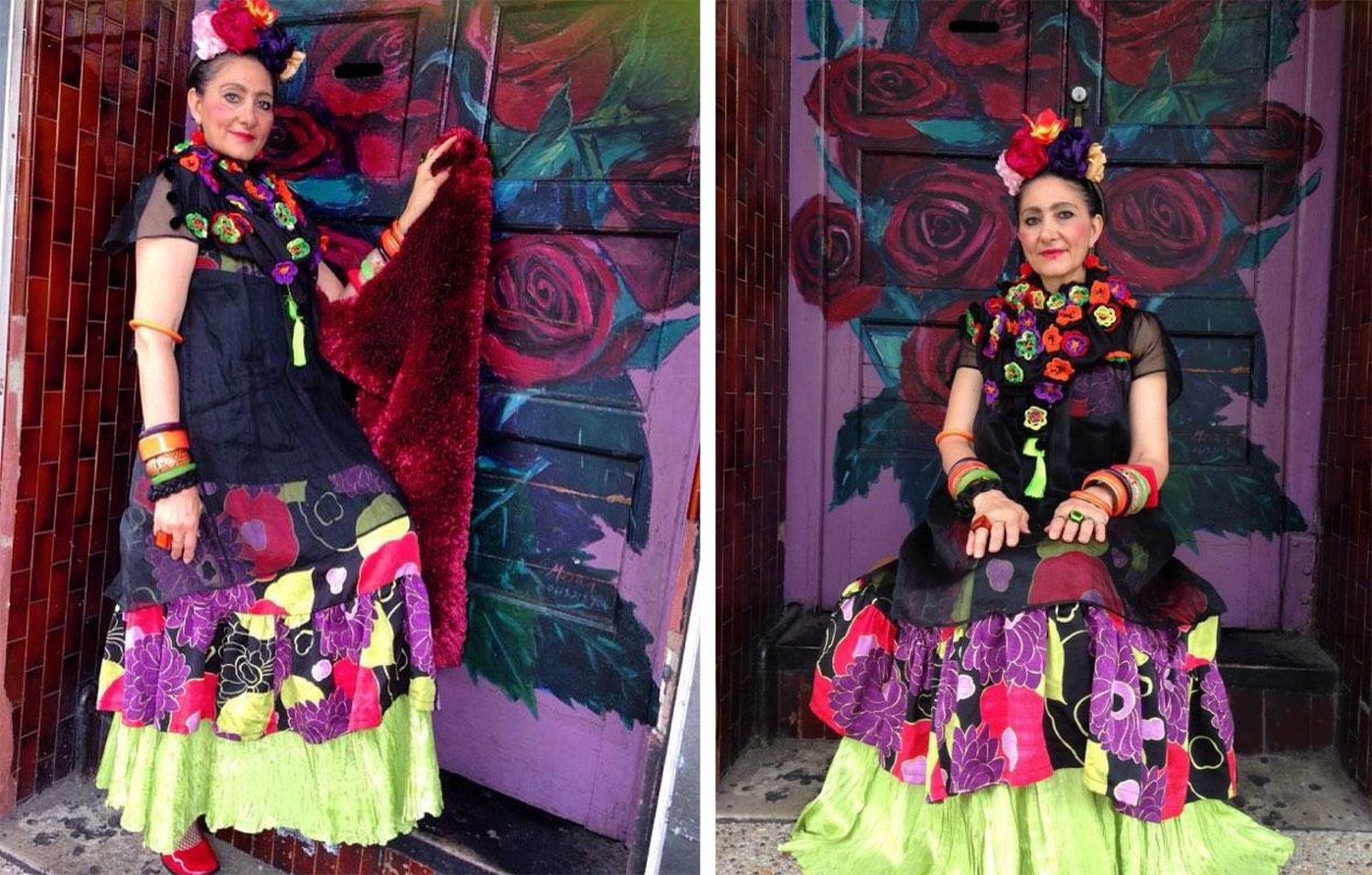
Elizabeth Kingston wears her Frida Kahlo-inspired ensemble handmade and styled from existing resources
Majella Albion – encouraging a more frugal attitude towards the use of material resources.
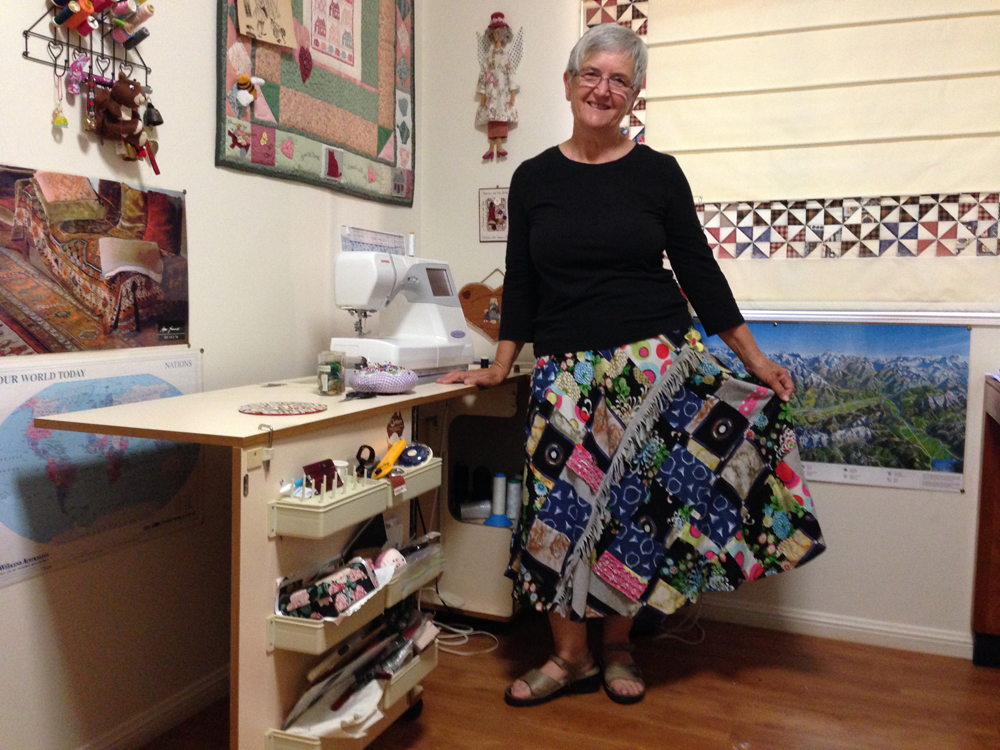
Majella Albion wears the upcycled skirt she made for The Slow Clothing Project.
Paisley Park – conscious of what surrounds her, including food, clothing, people, environment
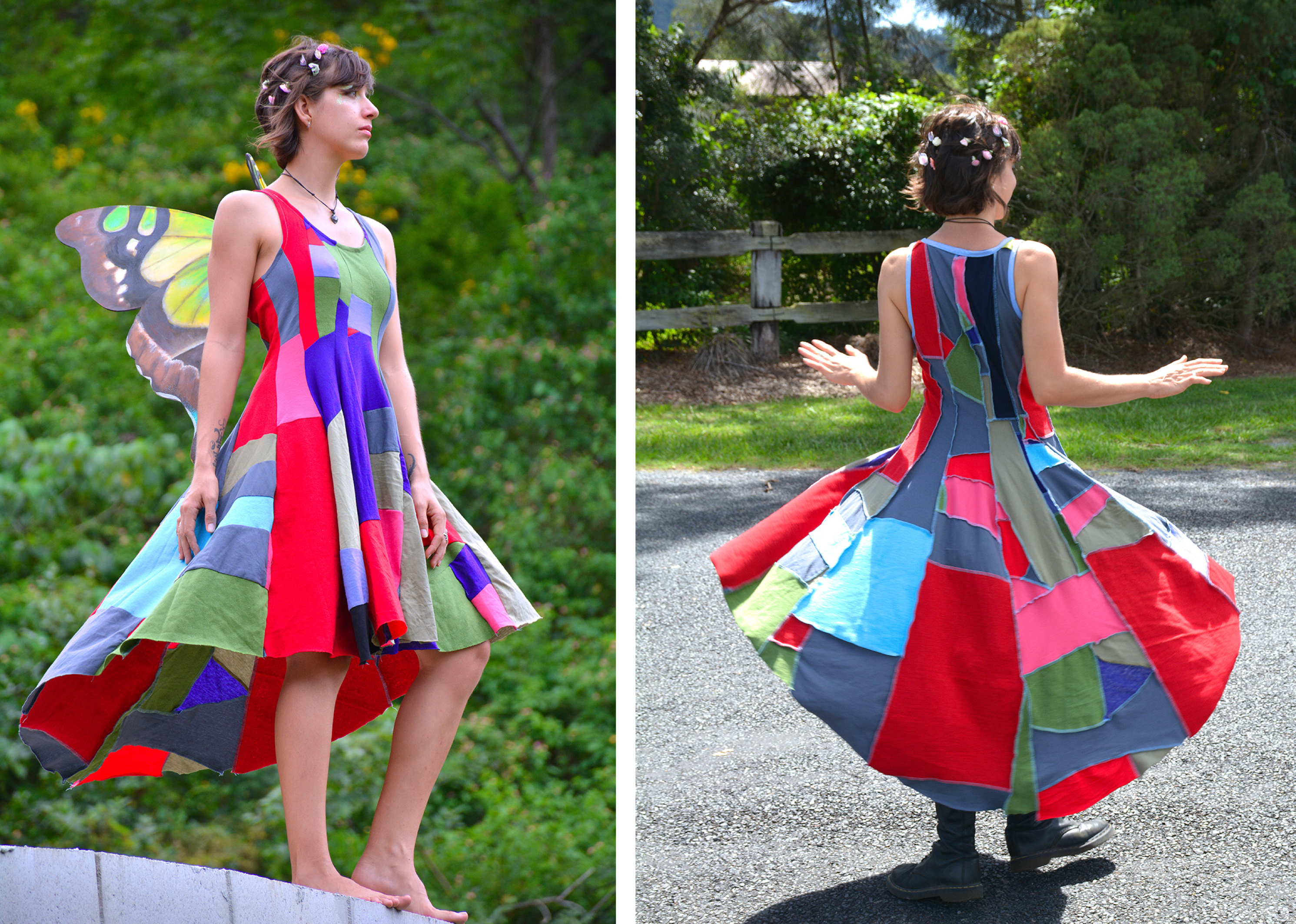
Paisley Park in the dress she created from cotton offcuts for The Slow Clothing Project
Miriam Gillham – sewing enables you to create clothing that is considered and thoughtful
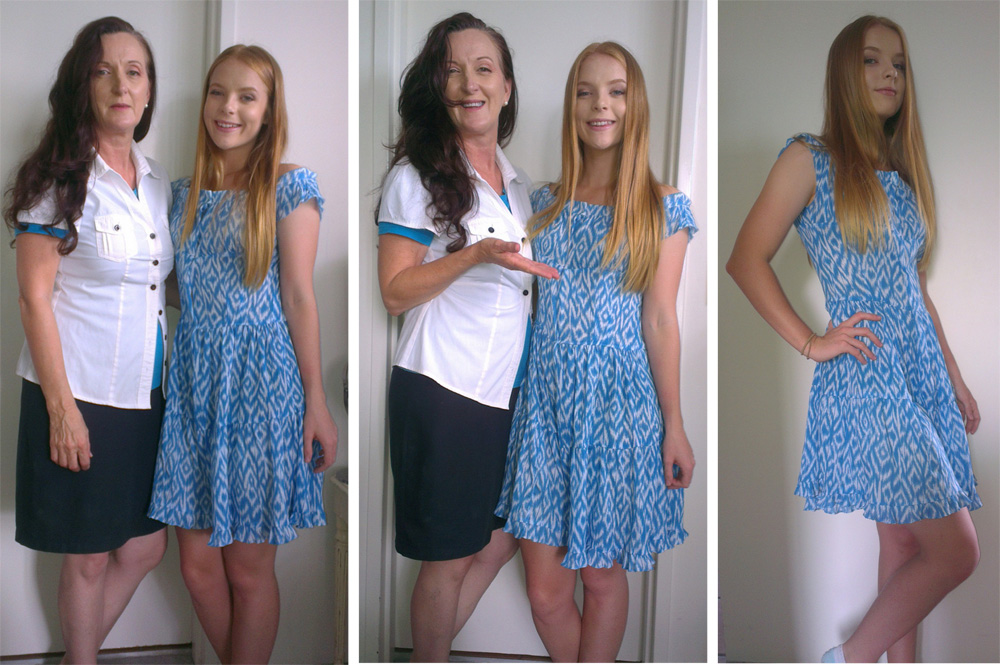
Fiona Saunders – her life has always included handmade, recycled and repurposed clothes
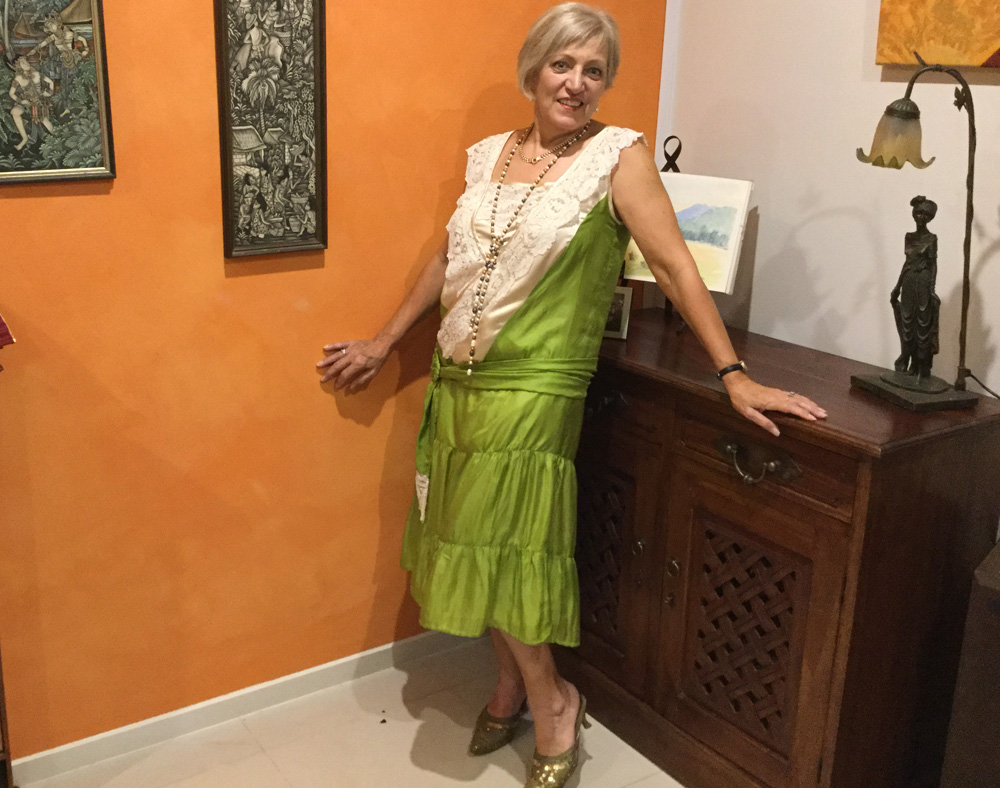
Fiona Saunders wears upcycled silk and lace garment she created for The Slow Clothing Project
Dr Libby Woodhams – demonstrating creative reuse and the wonderful properties of wool
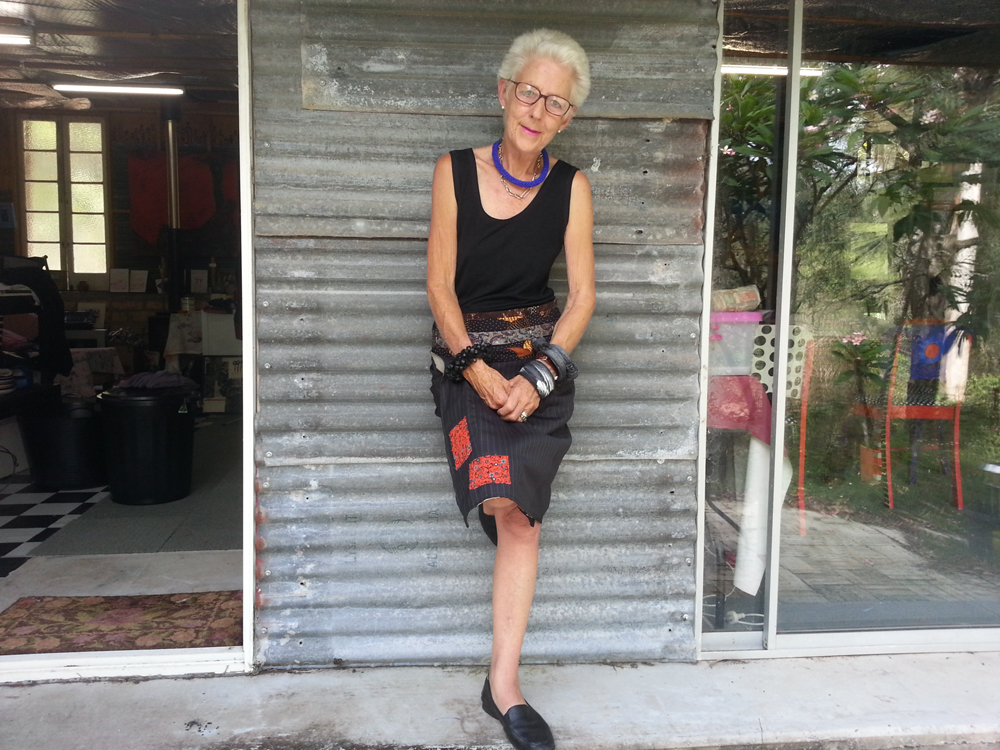
Dr Libby Woodhams created this reversible wrap skirt for The Slow Clothing Project
Annabelle Brayley – a best-selling author who makes all her ‘good’ clothes from natural fibres.

Annabelle Brayley renovated a handmade favourite linen jacket for The Slow Clothing Project
Neroli Roocke – a journalist who believes thinking about consumption is a key to sustainability

Maker Neroli Roocke wears a skirt she created from vintage curtains for The Slow Clothing Project
Kylie Challenor – a professional editor who taught herself to sew as a adult
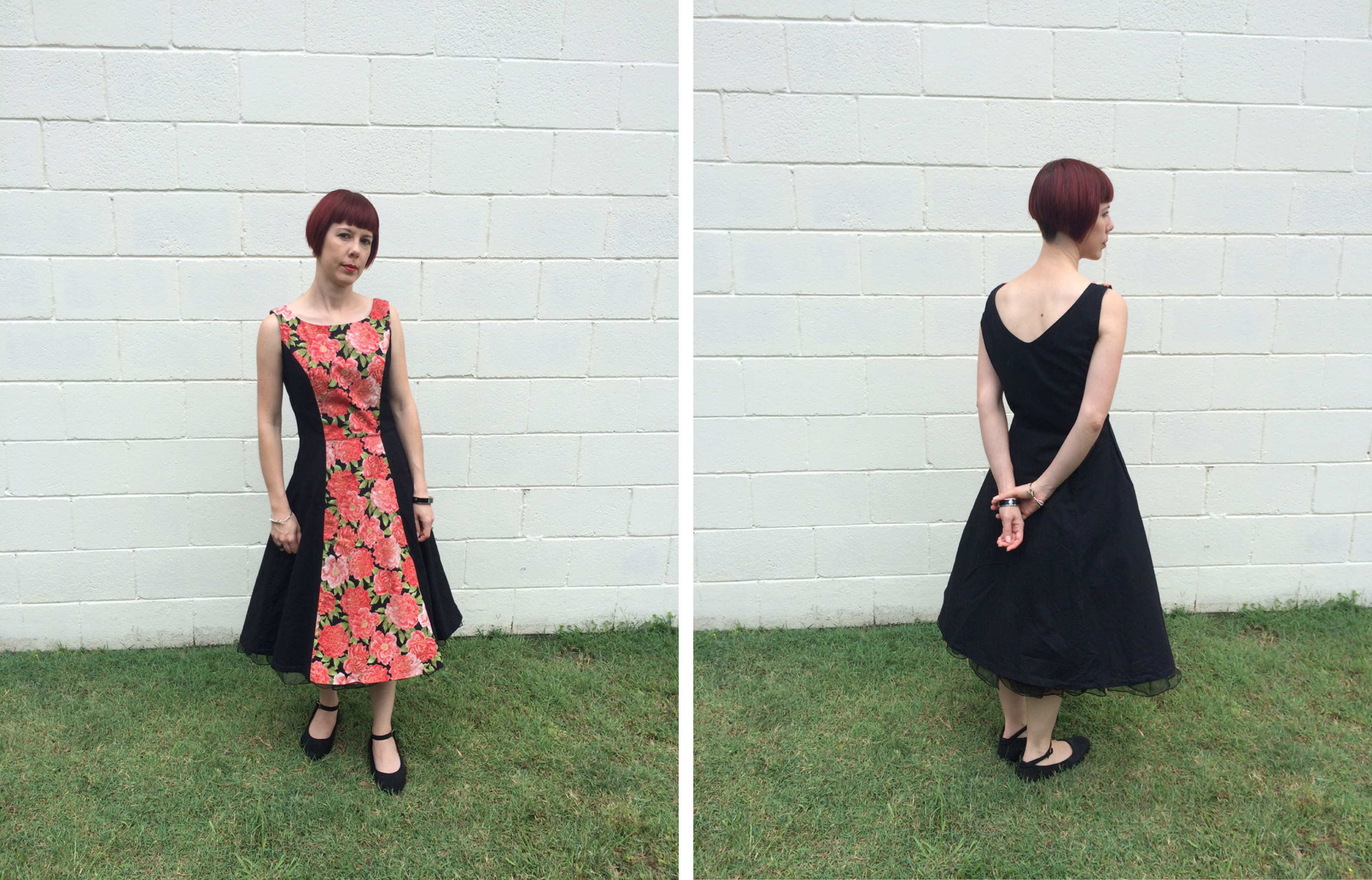
Julie Hillier – teaching handmade with a contemporary twist at Ministry of Handmade
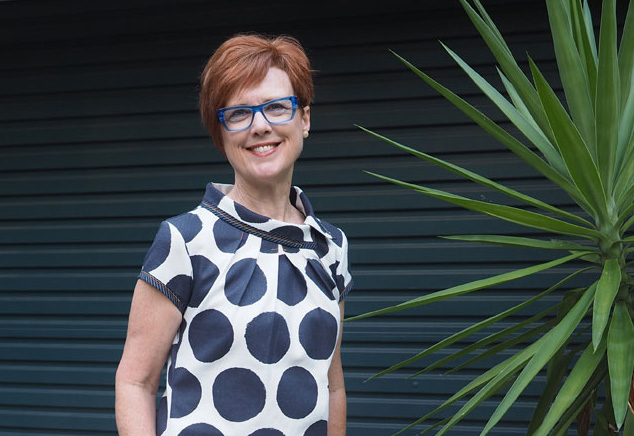
Jane Milburn – project leader and founder of Textile Beat
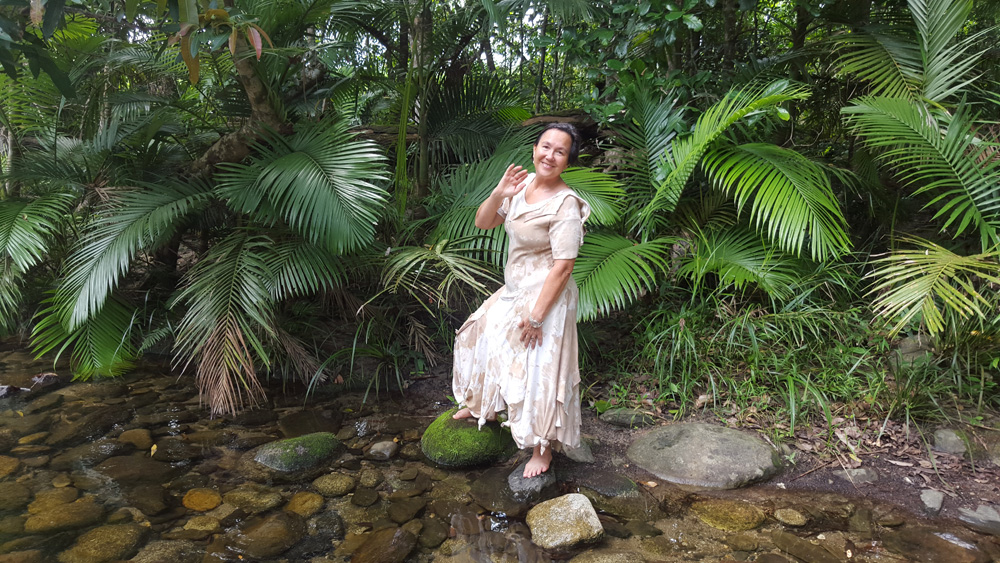
After more than a decade of ‘disposable’ fast fashion, there’s growing interest in ethical and sustainable clothing with a good story to tell.
We created a collection of handmade garments during 2016, some of which will be showcased at a number of conferences and public spaces during 2016 and 2017. Each garment becomes a different story about mindful and sustainable resource use told through various voices.
These stories reflect Slow Clothing Manifesto actions we can take to reduce our clothing footprint: think, natural, quality, local, care, few, make, adapt, revive and salvage.
The project narrative weaves knowledge and skills to help people choose well, use clothes for longer and reduce textile waste in landfill. It celebrates the mindful/healthful benefits of handmade and will grow awareness of the usefulness of stitching and sewing. It explores the history of natural-fibre industries in Australia, and celebrates local growers and makers.
We are based in Australia, that’s local to us. Yet this project has a global mission which aligns with Goal 12 of the United Nations’ 2030 Agenda for Sustainable Development: Ensure sustainable consumption and production patterns.
